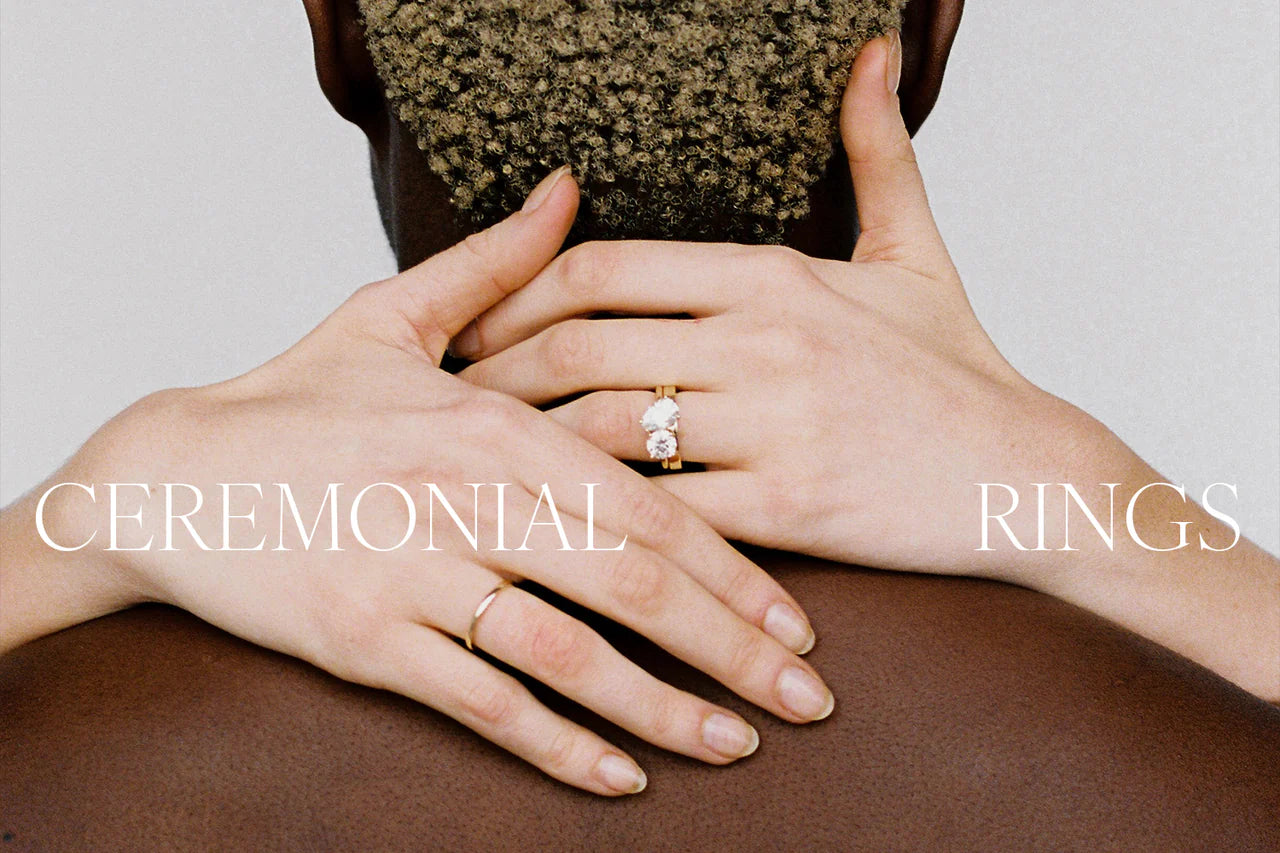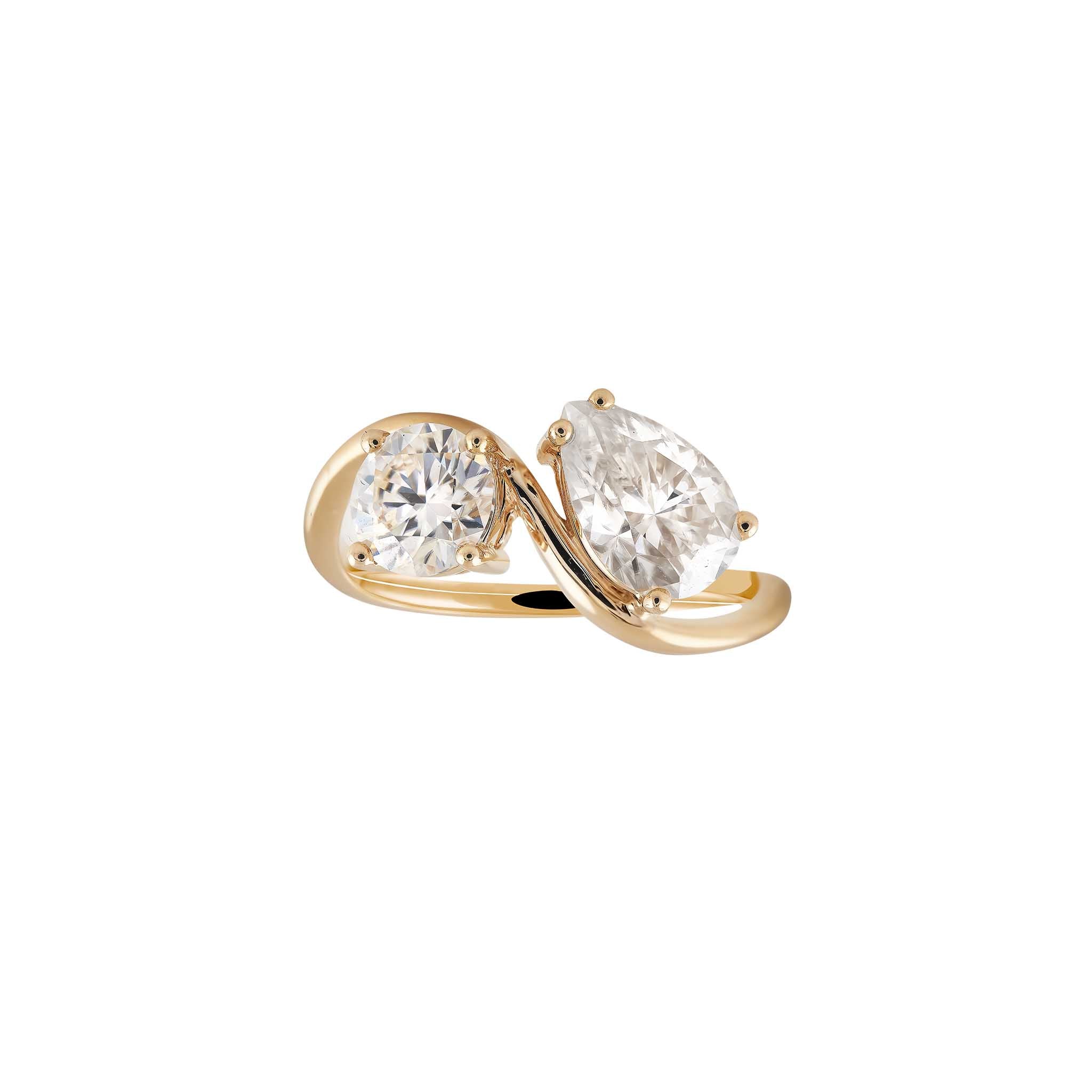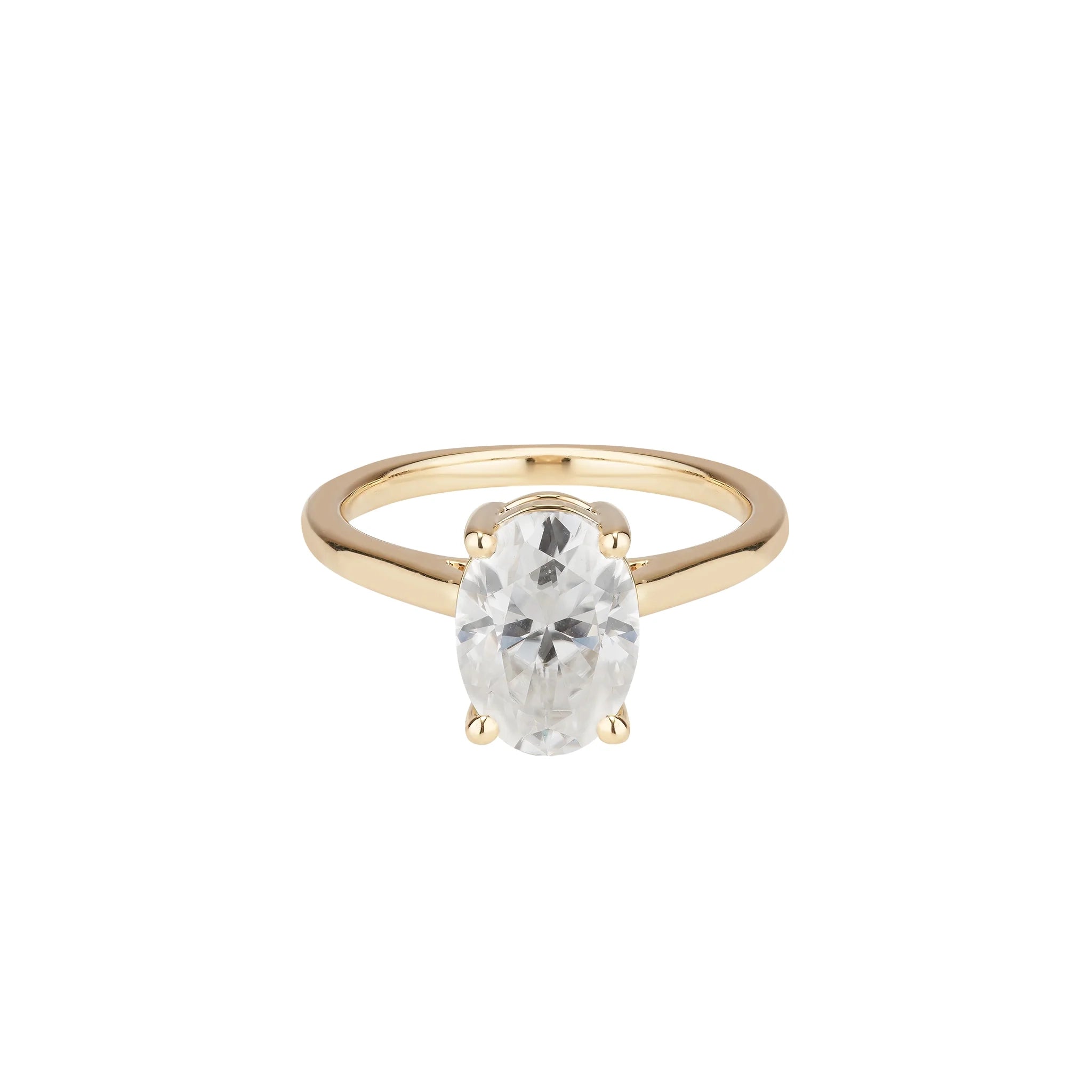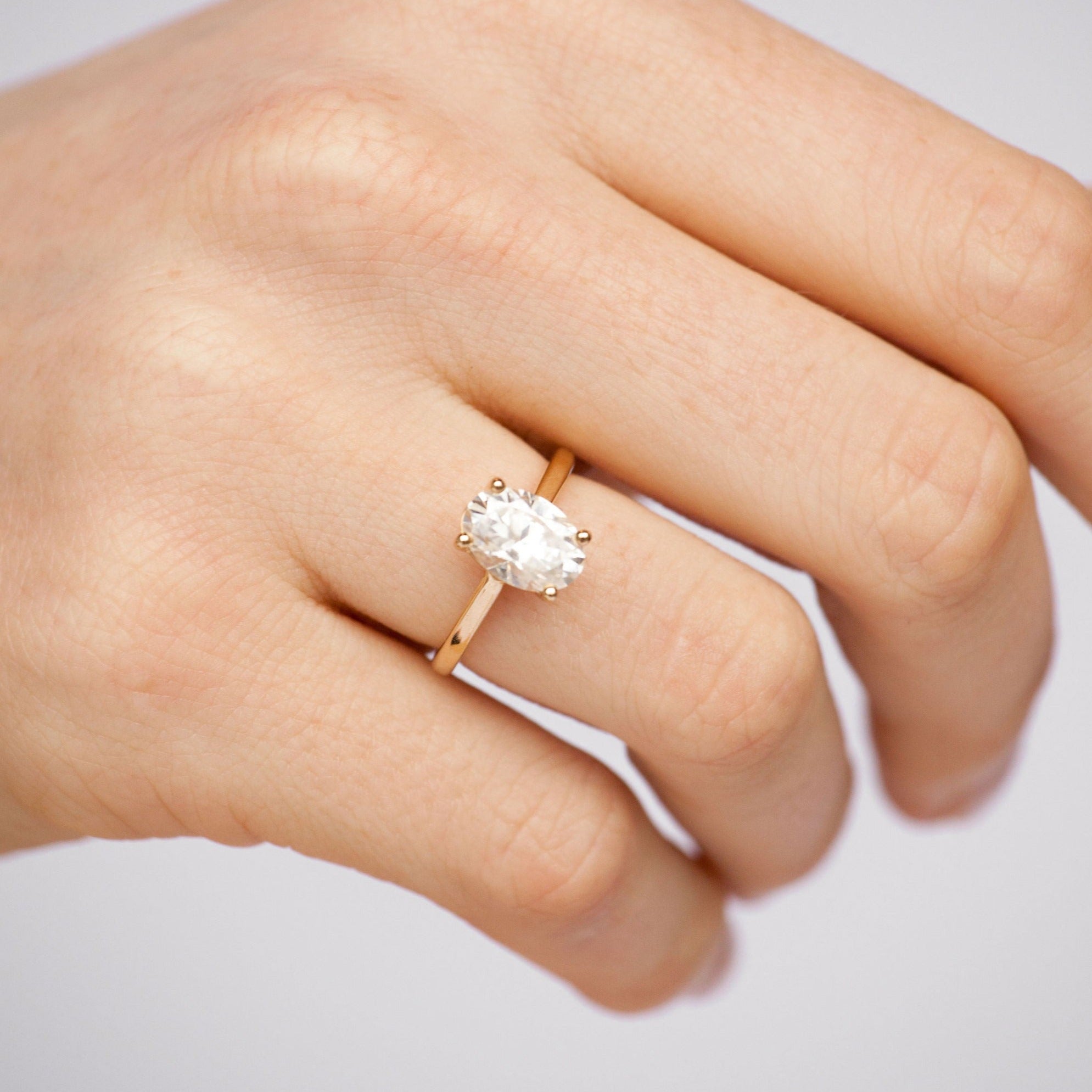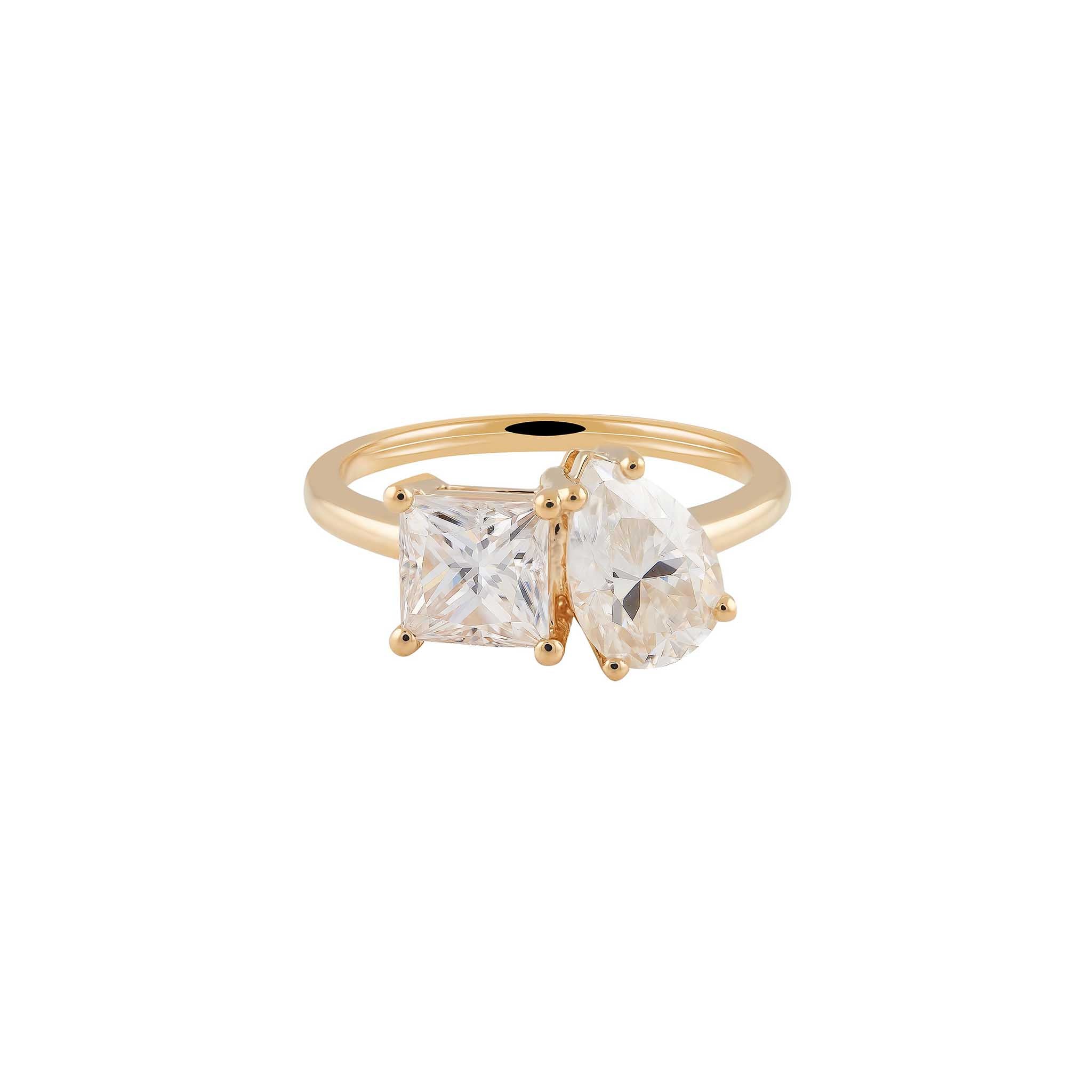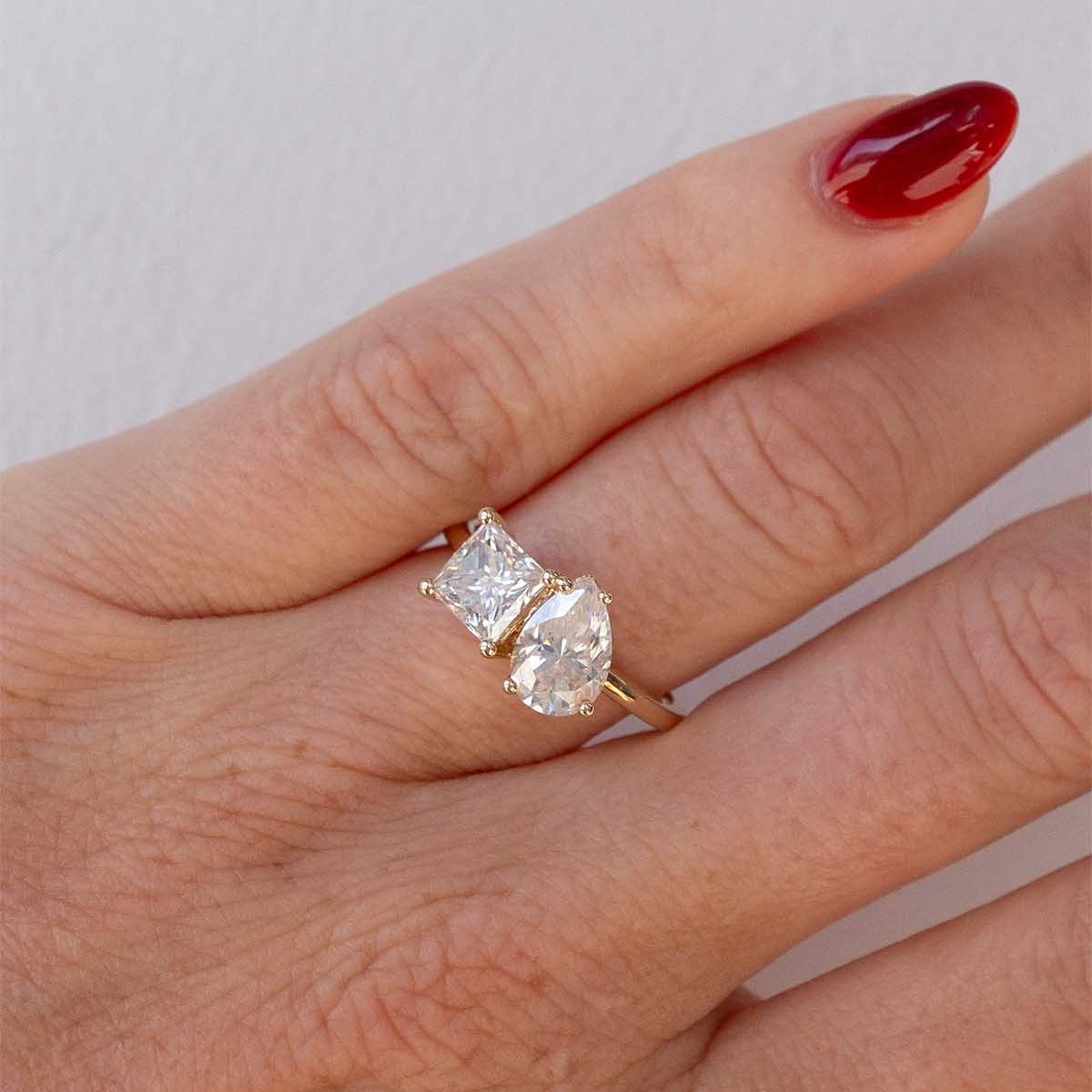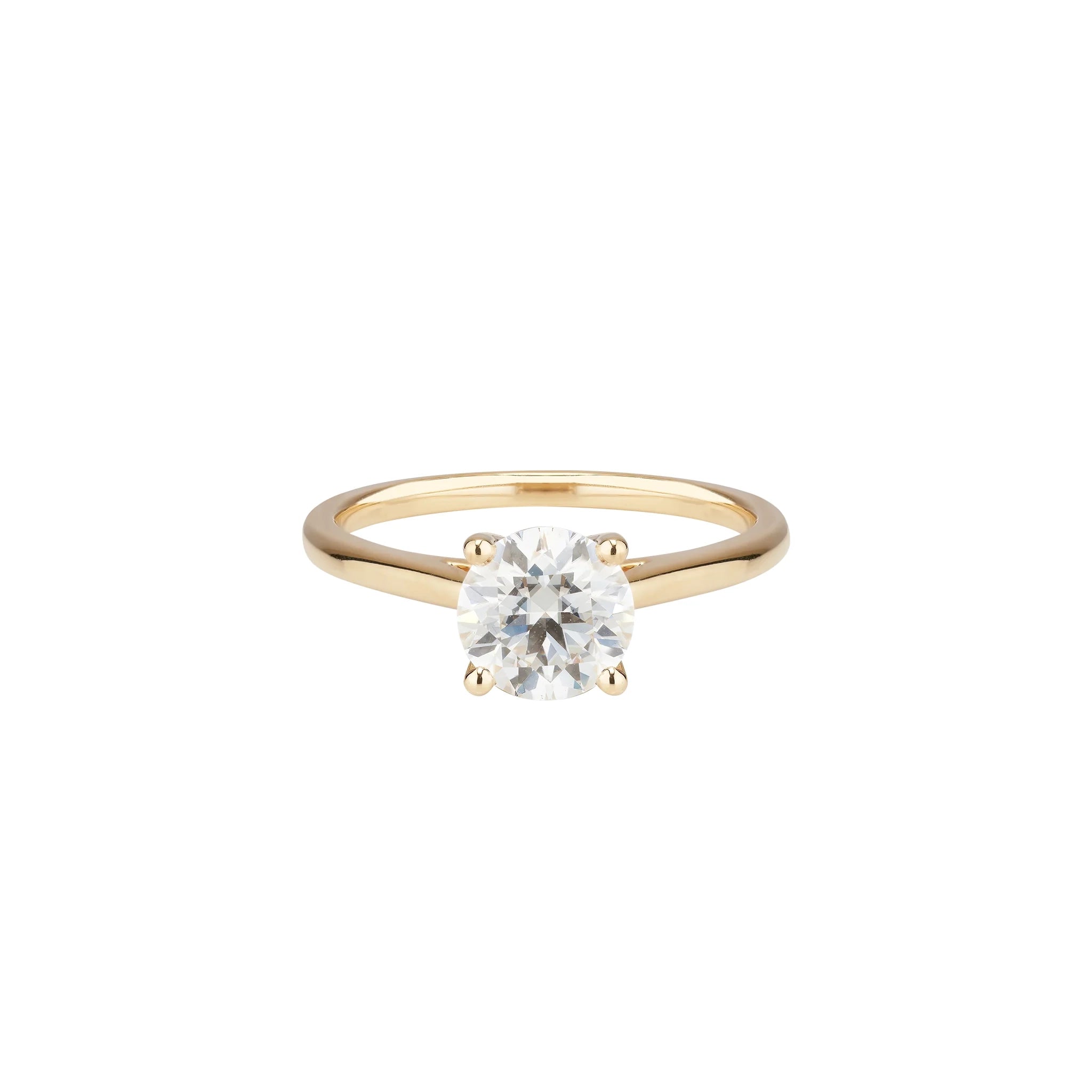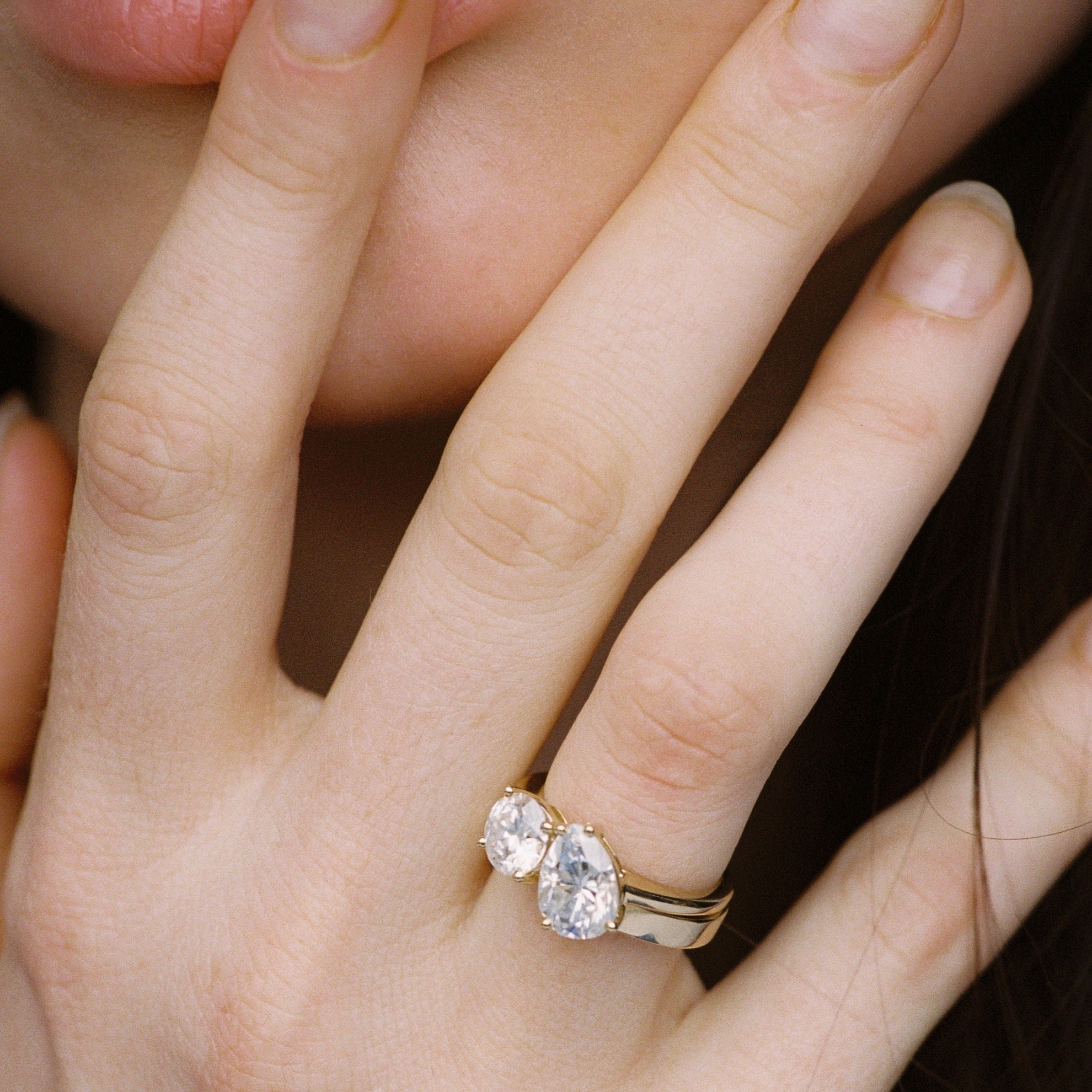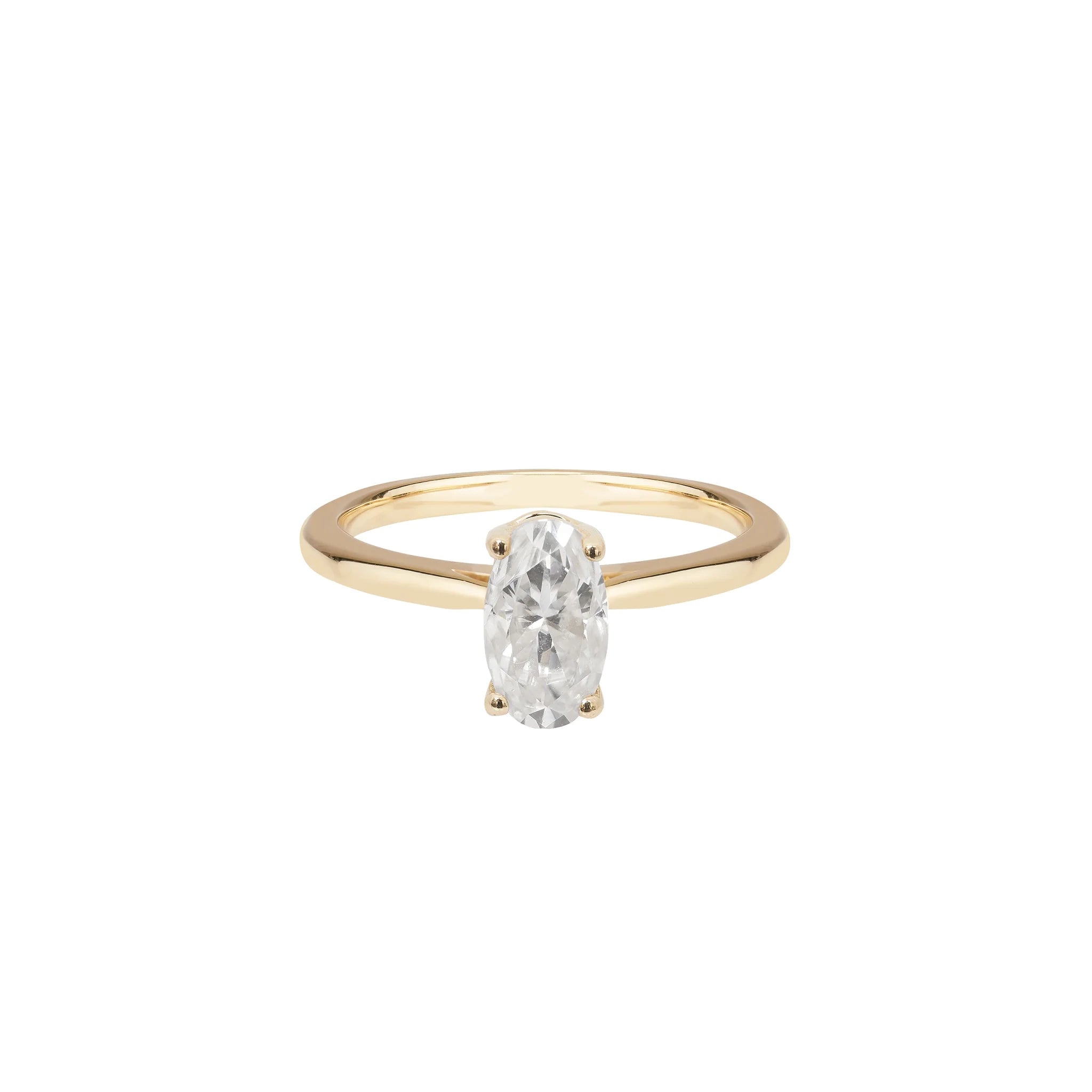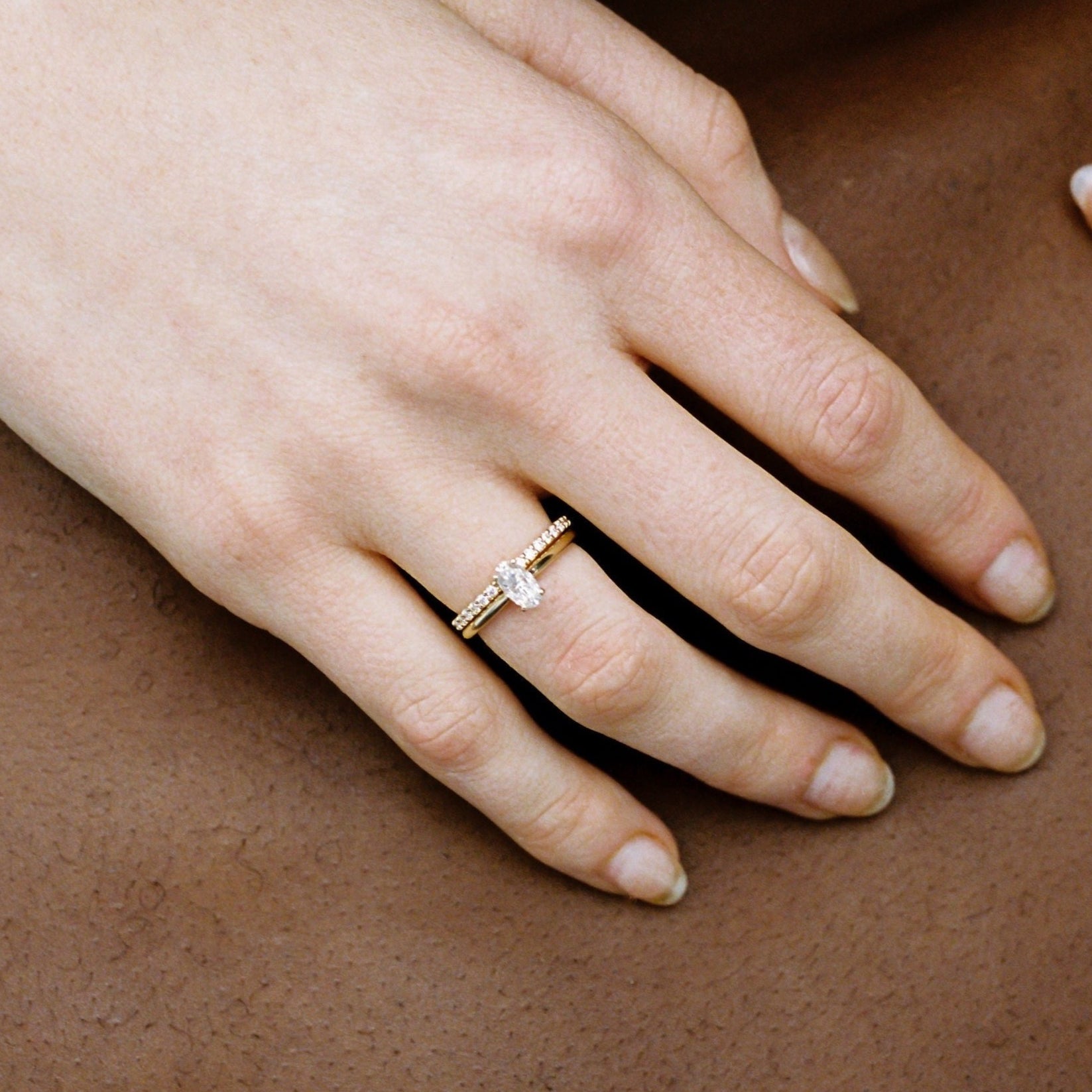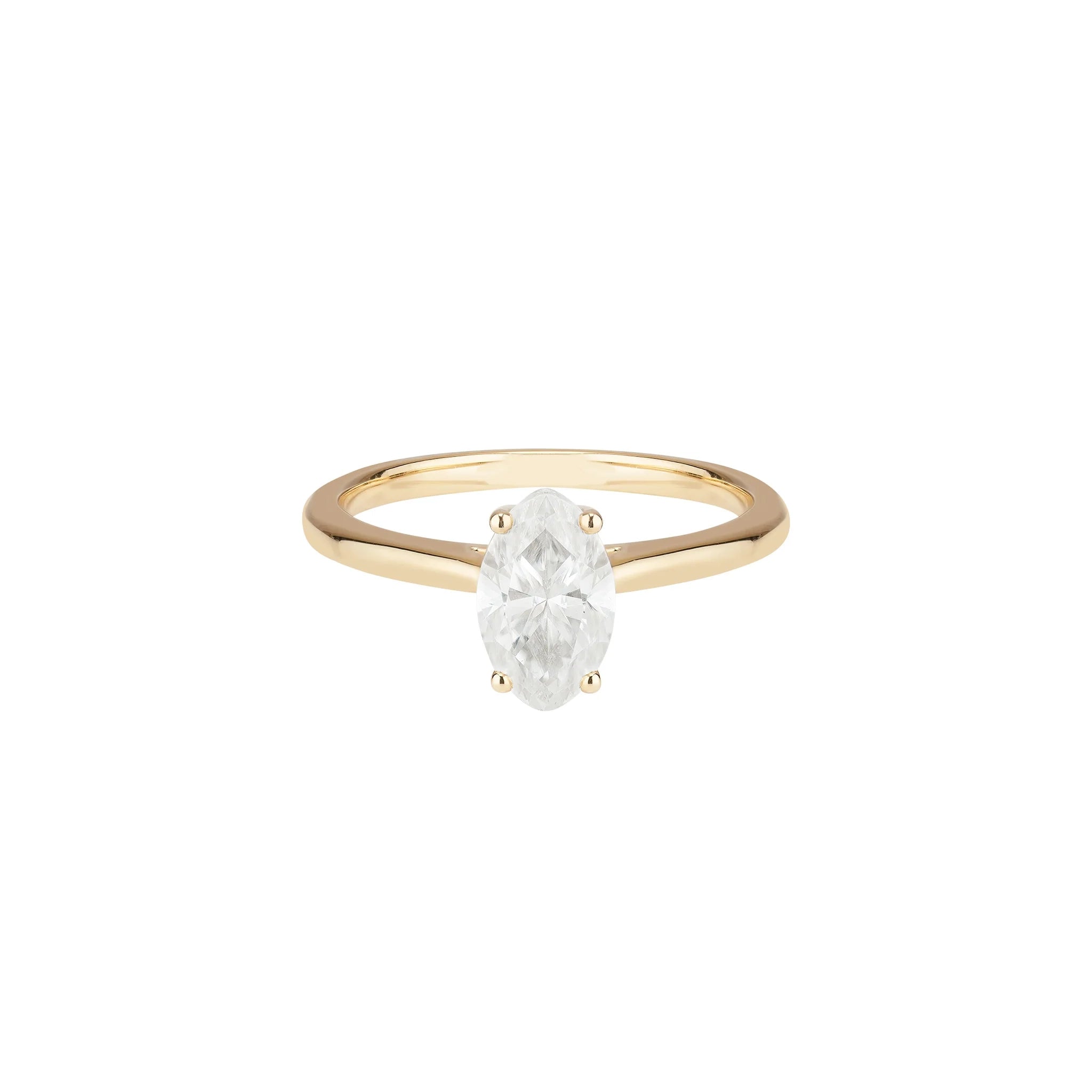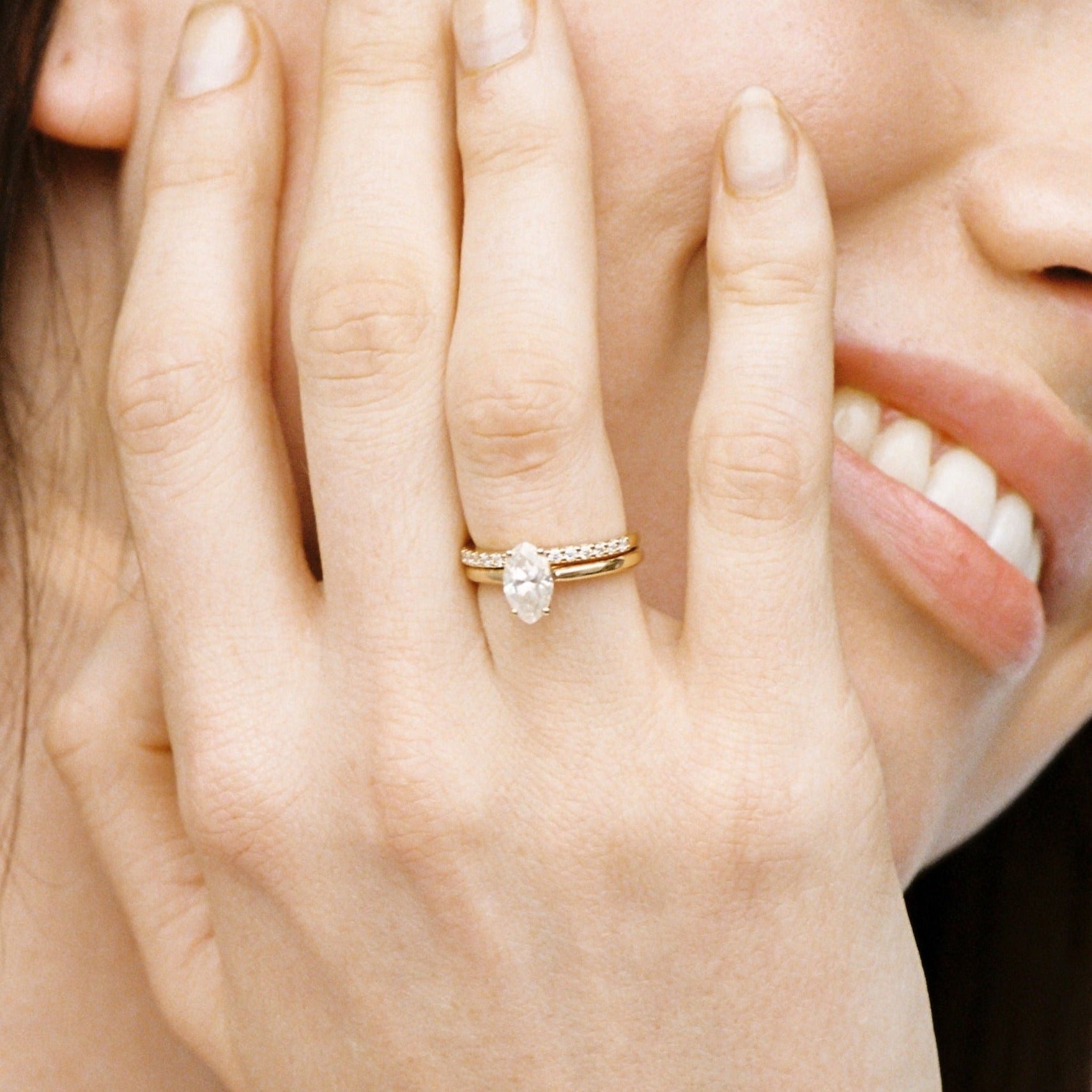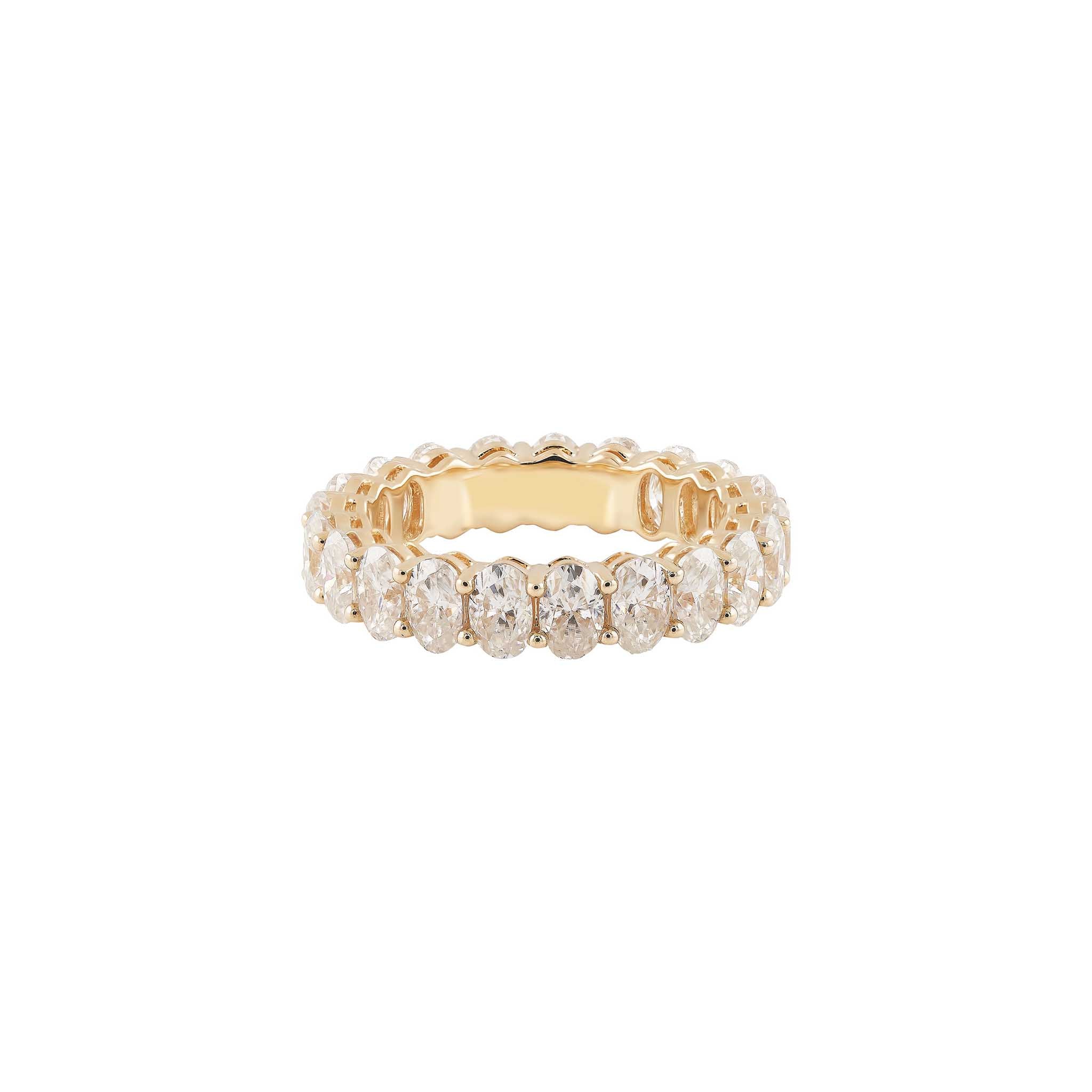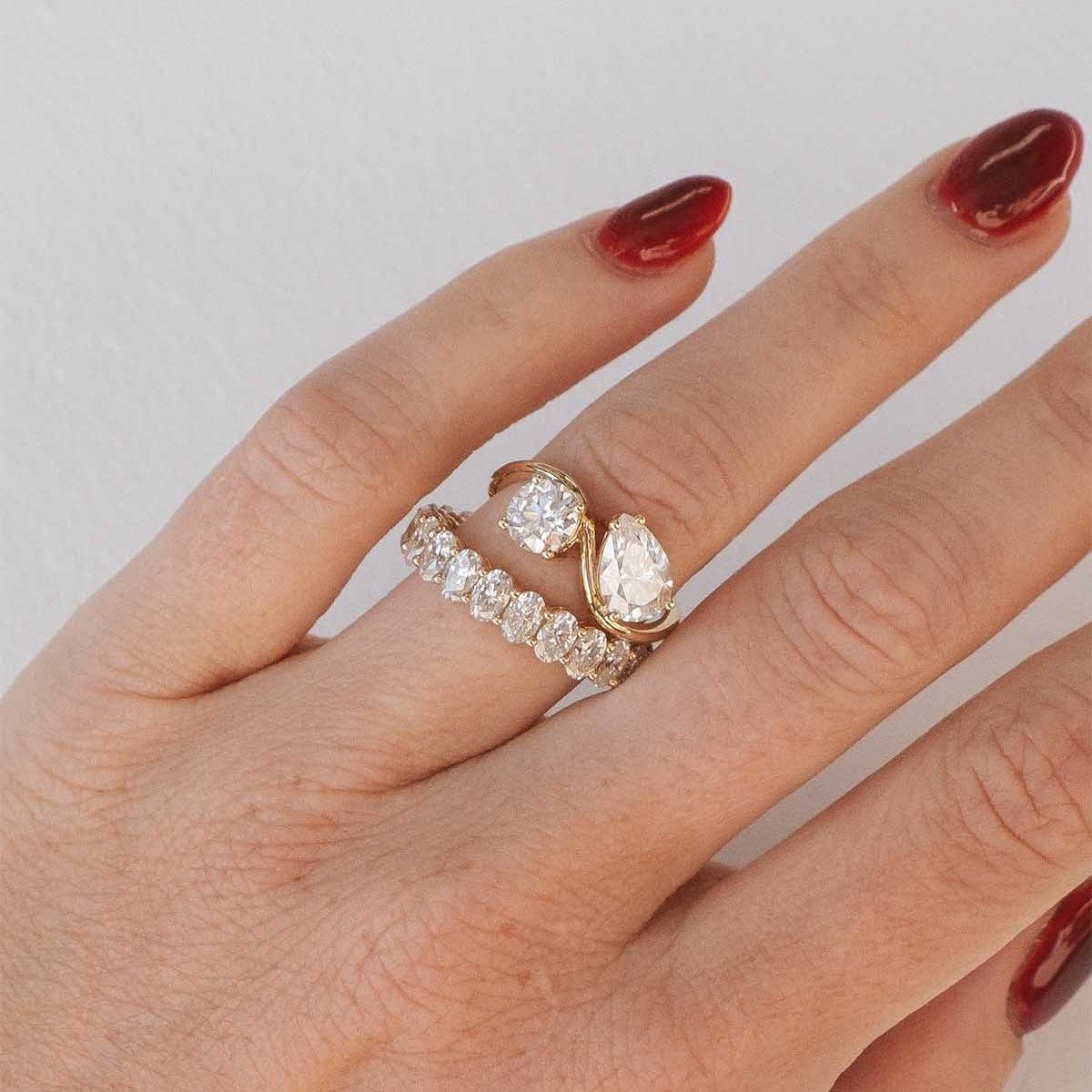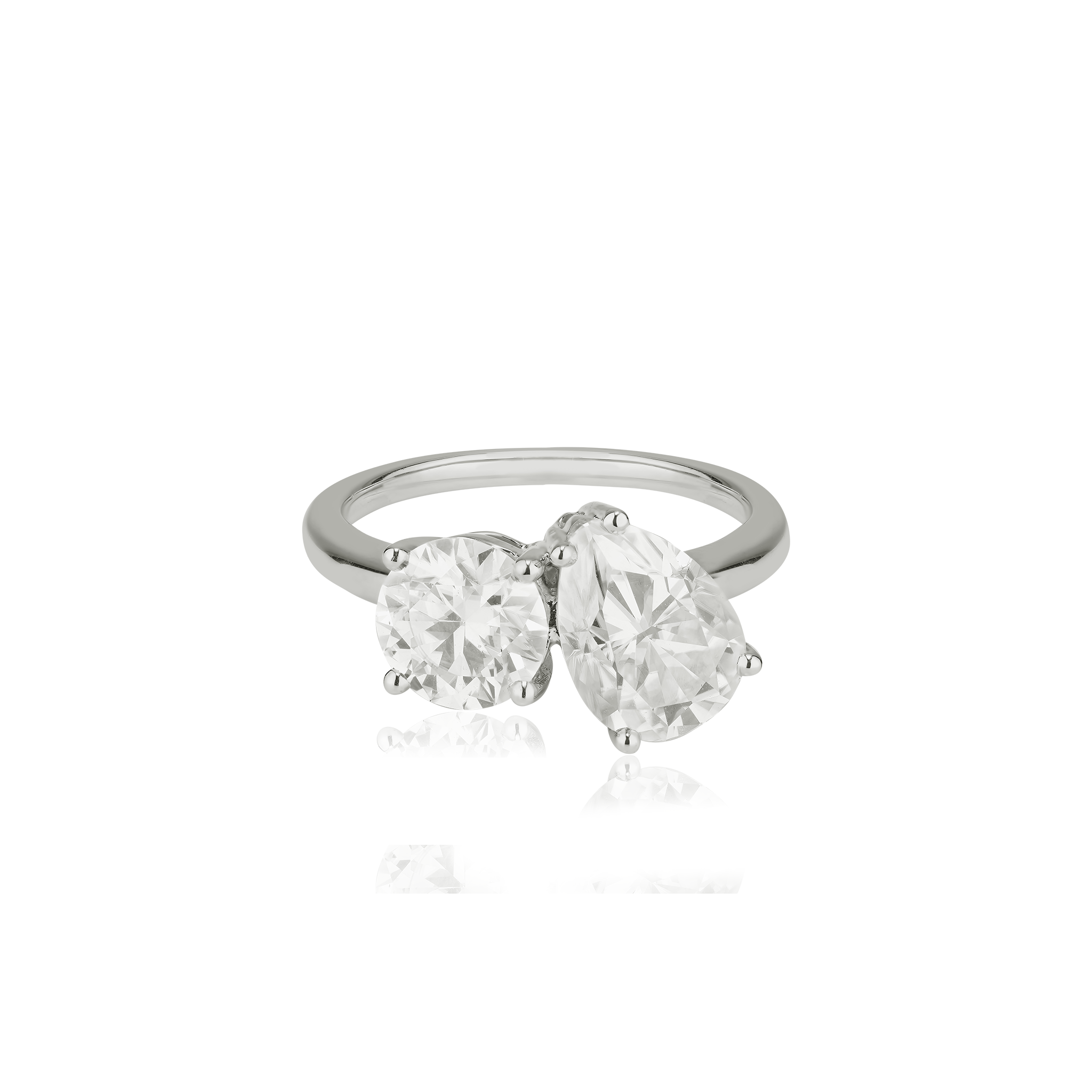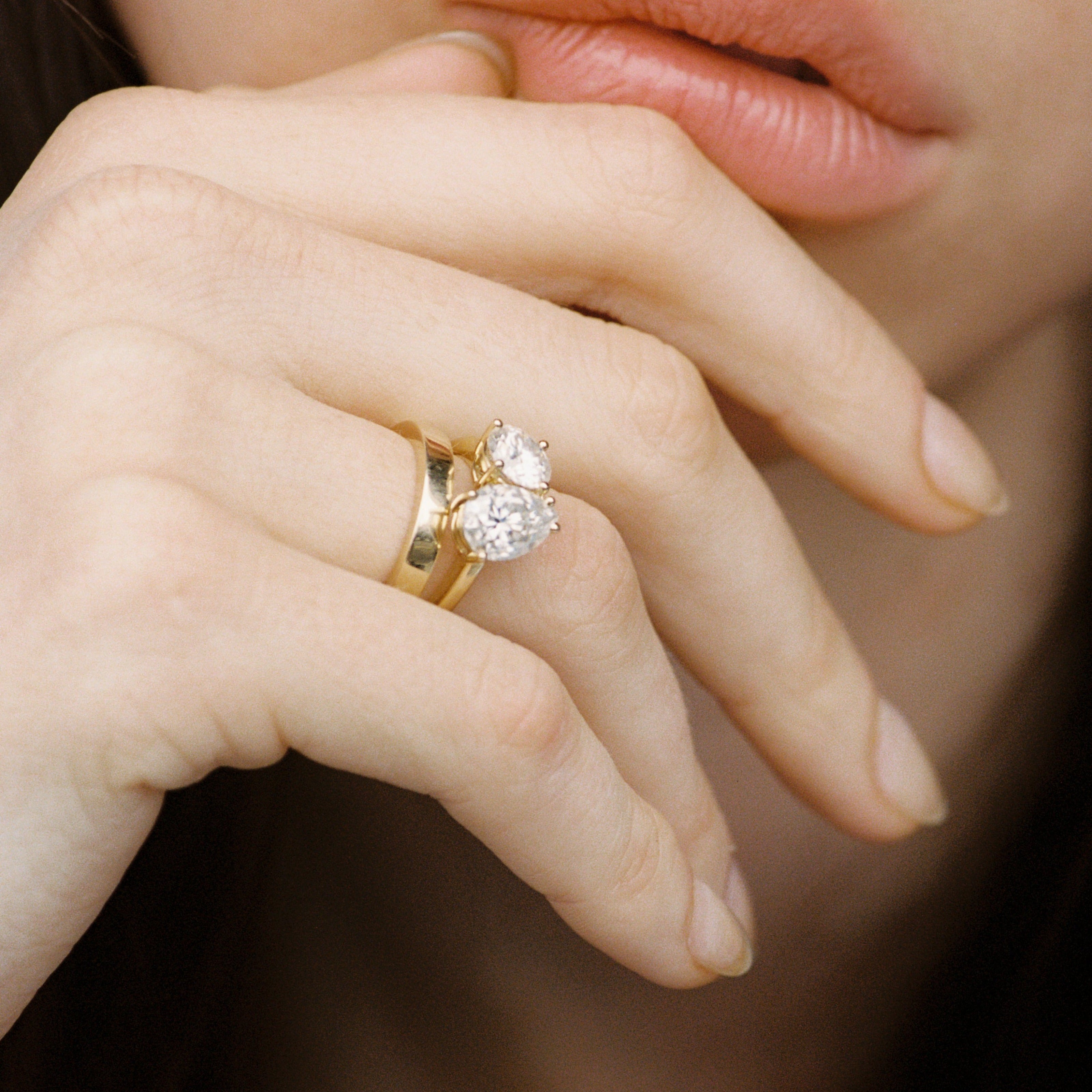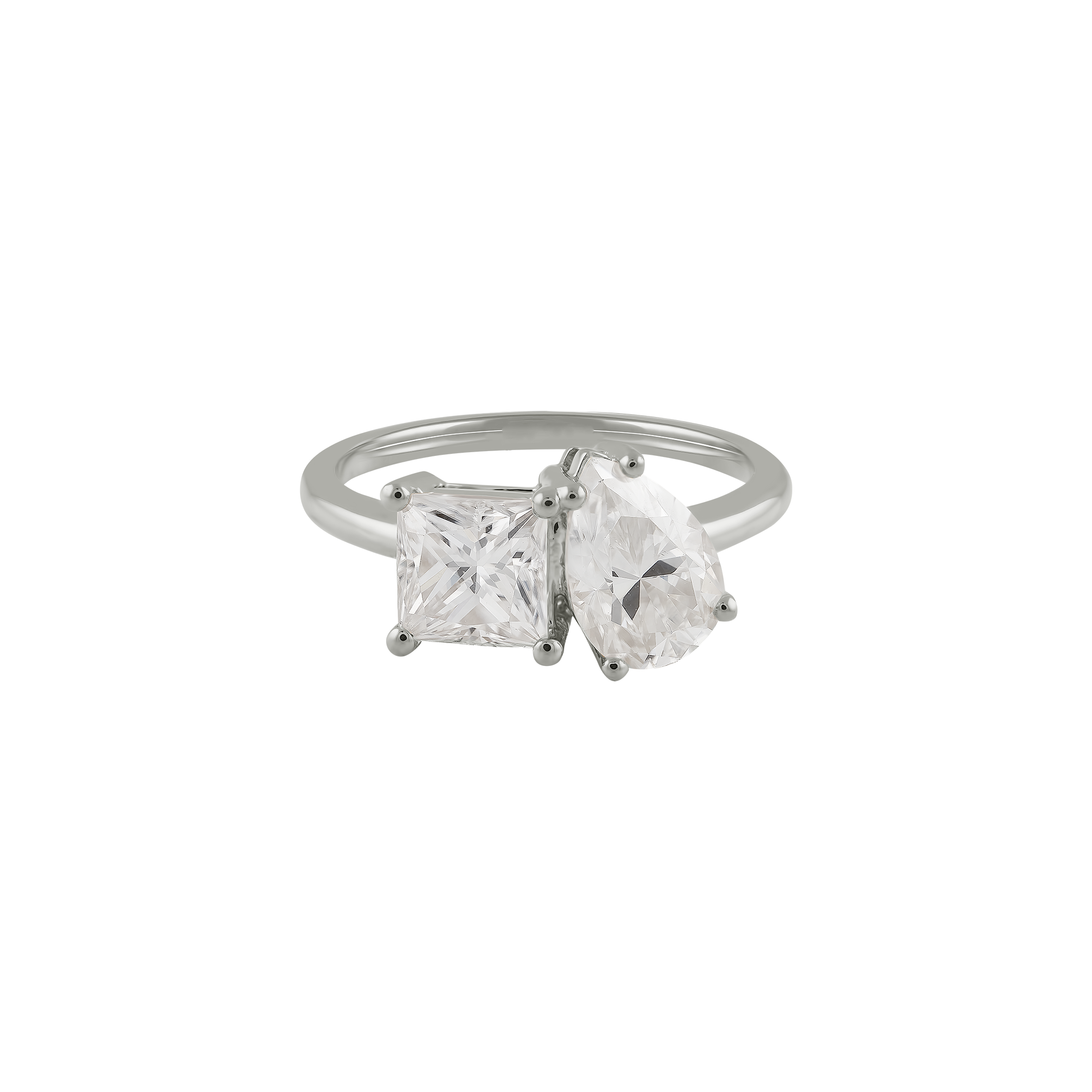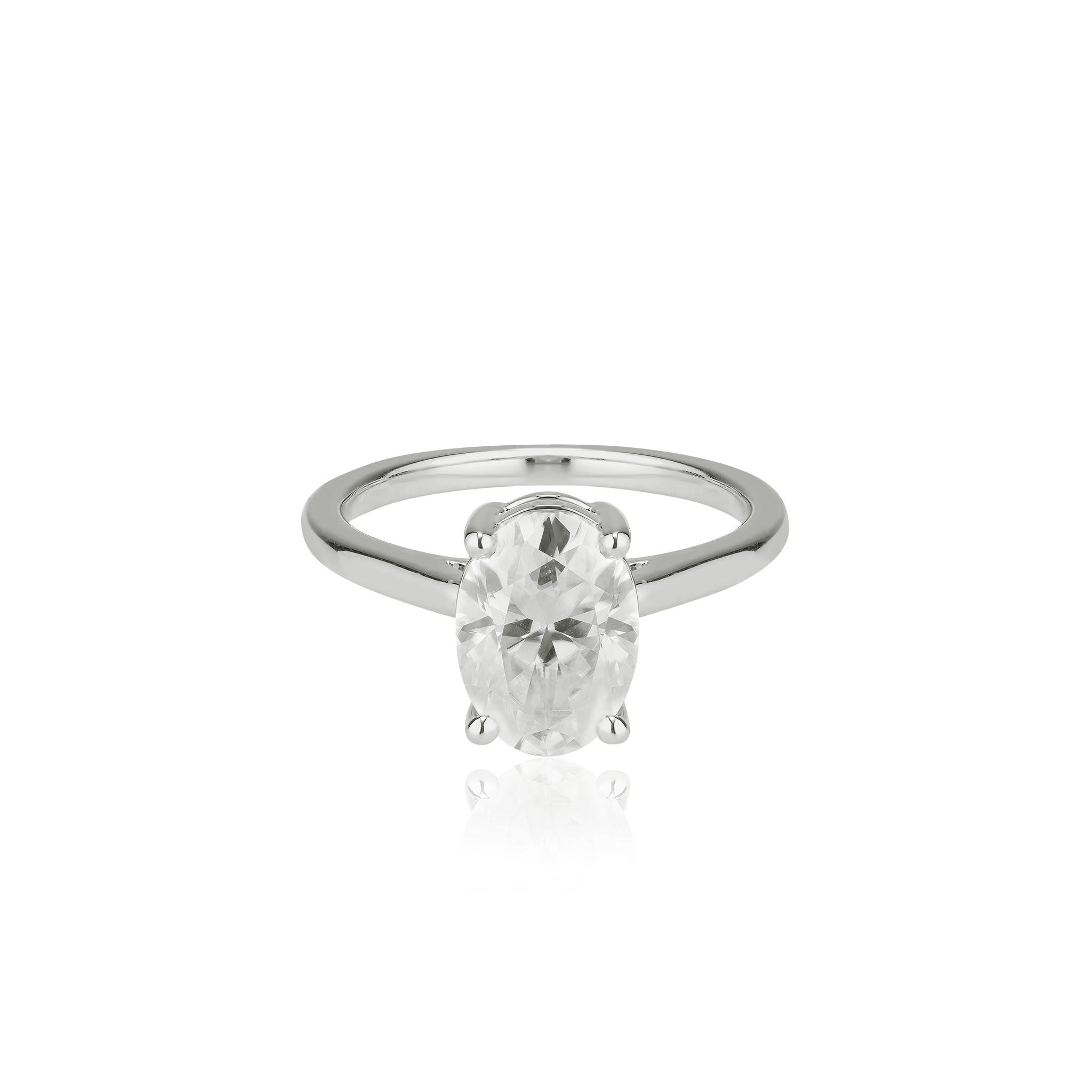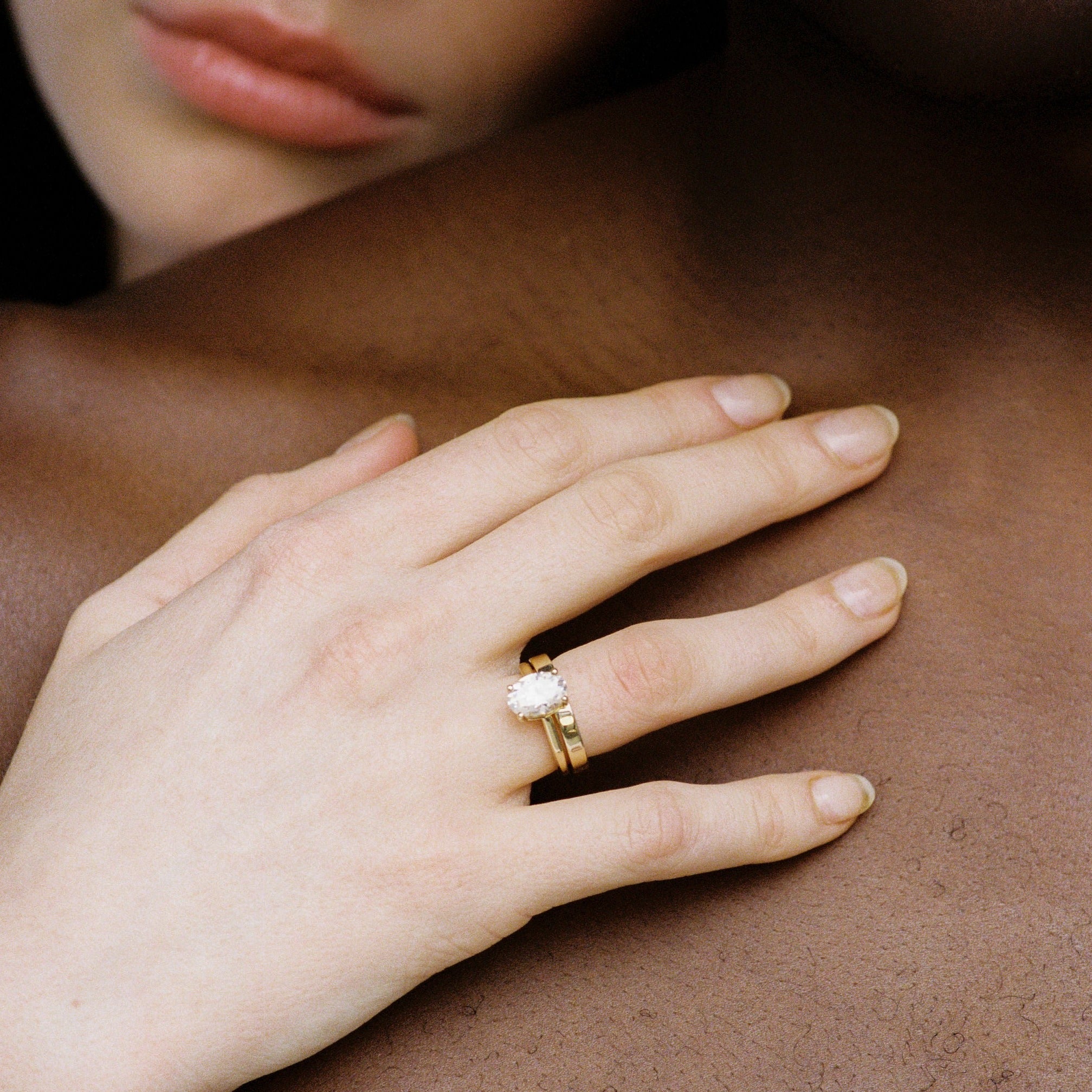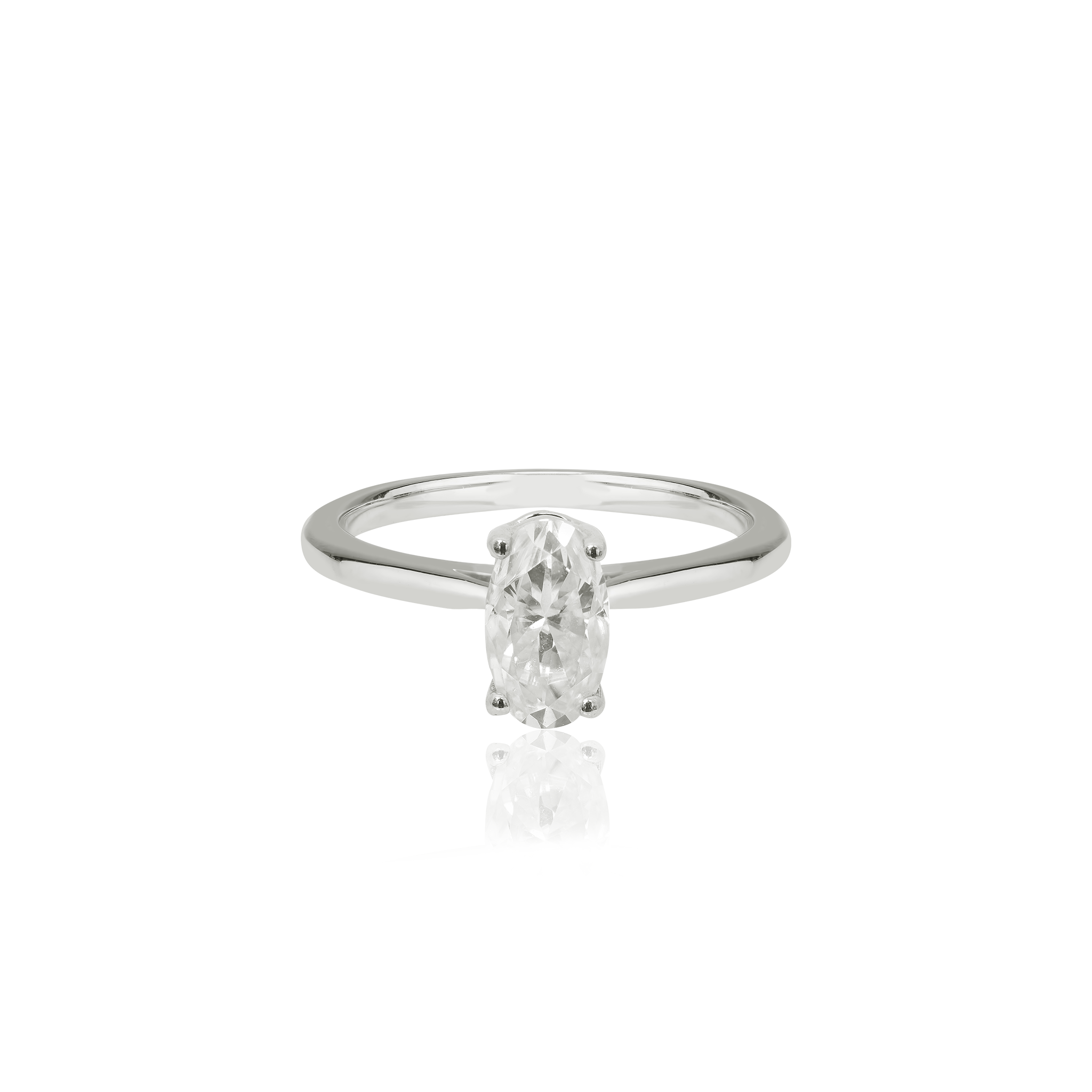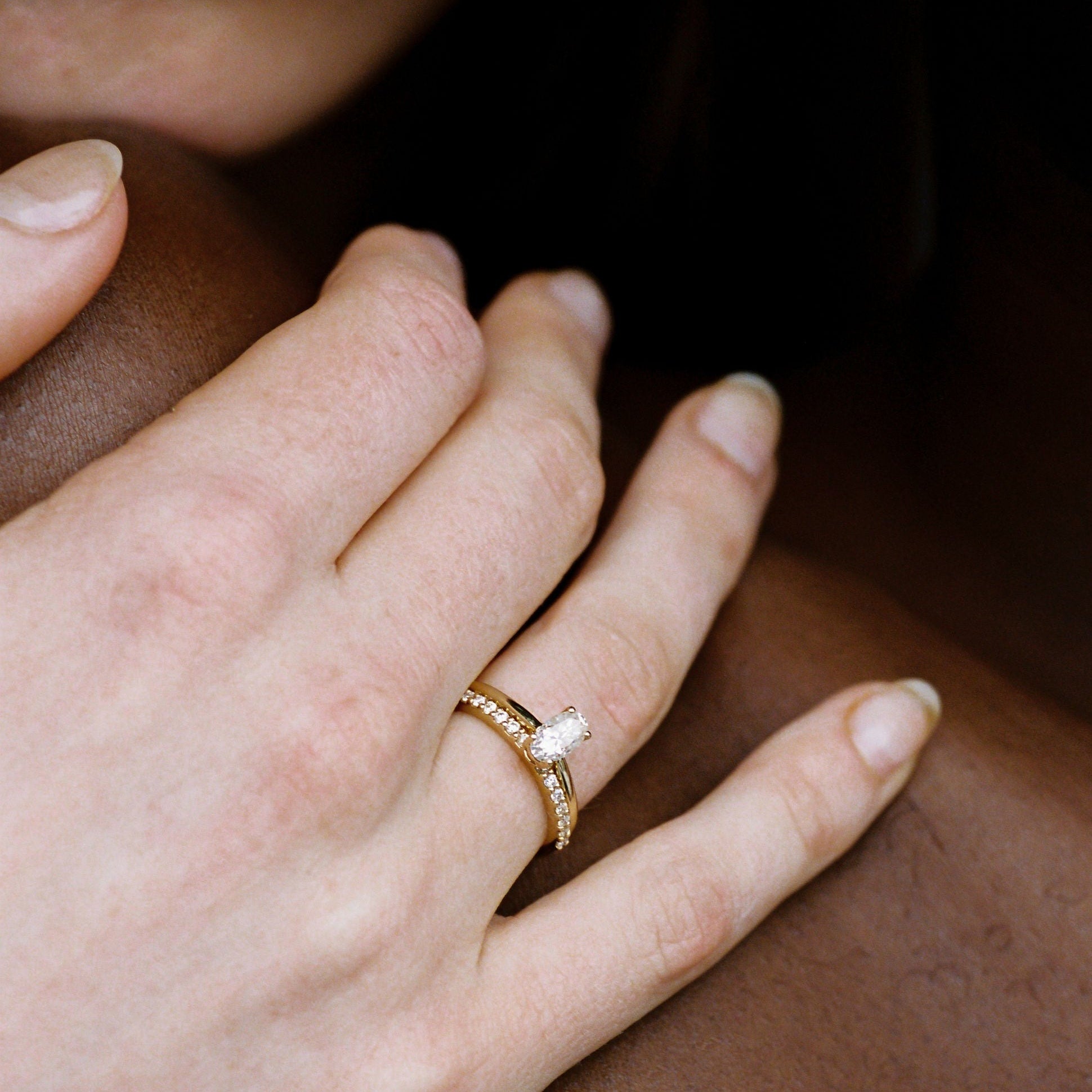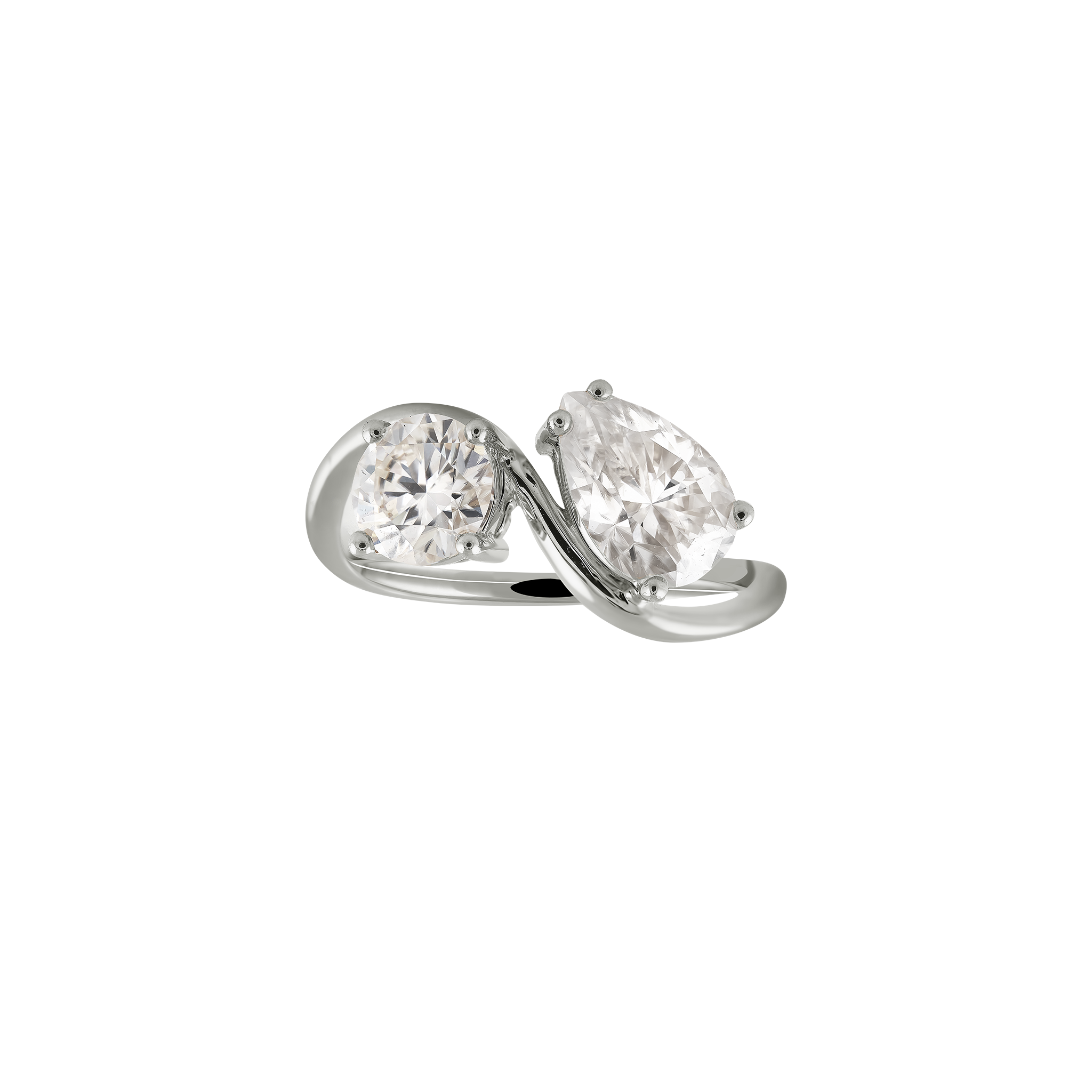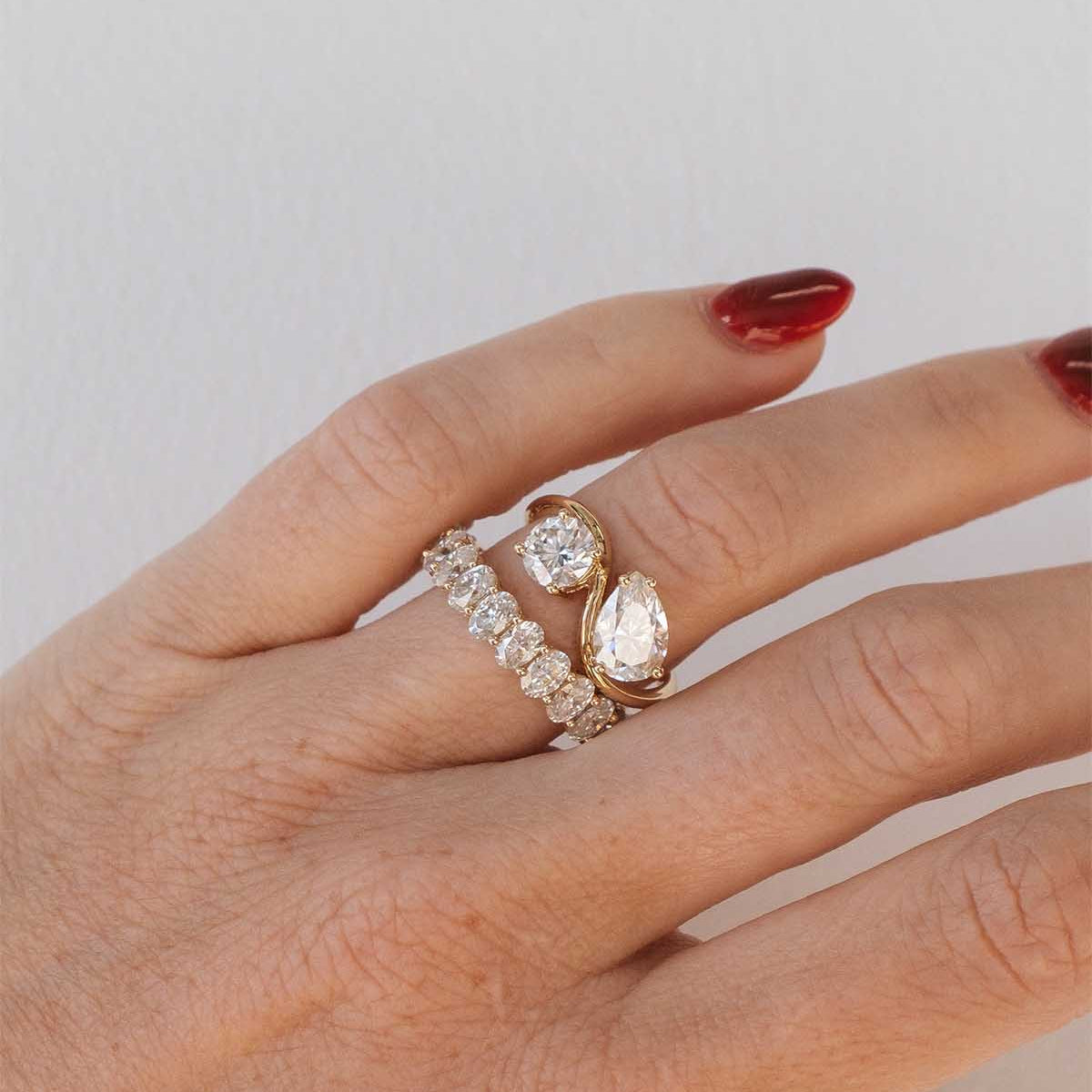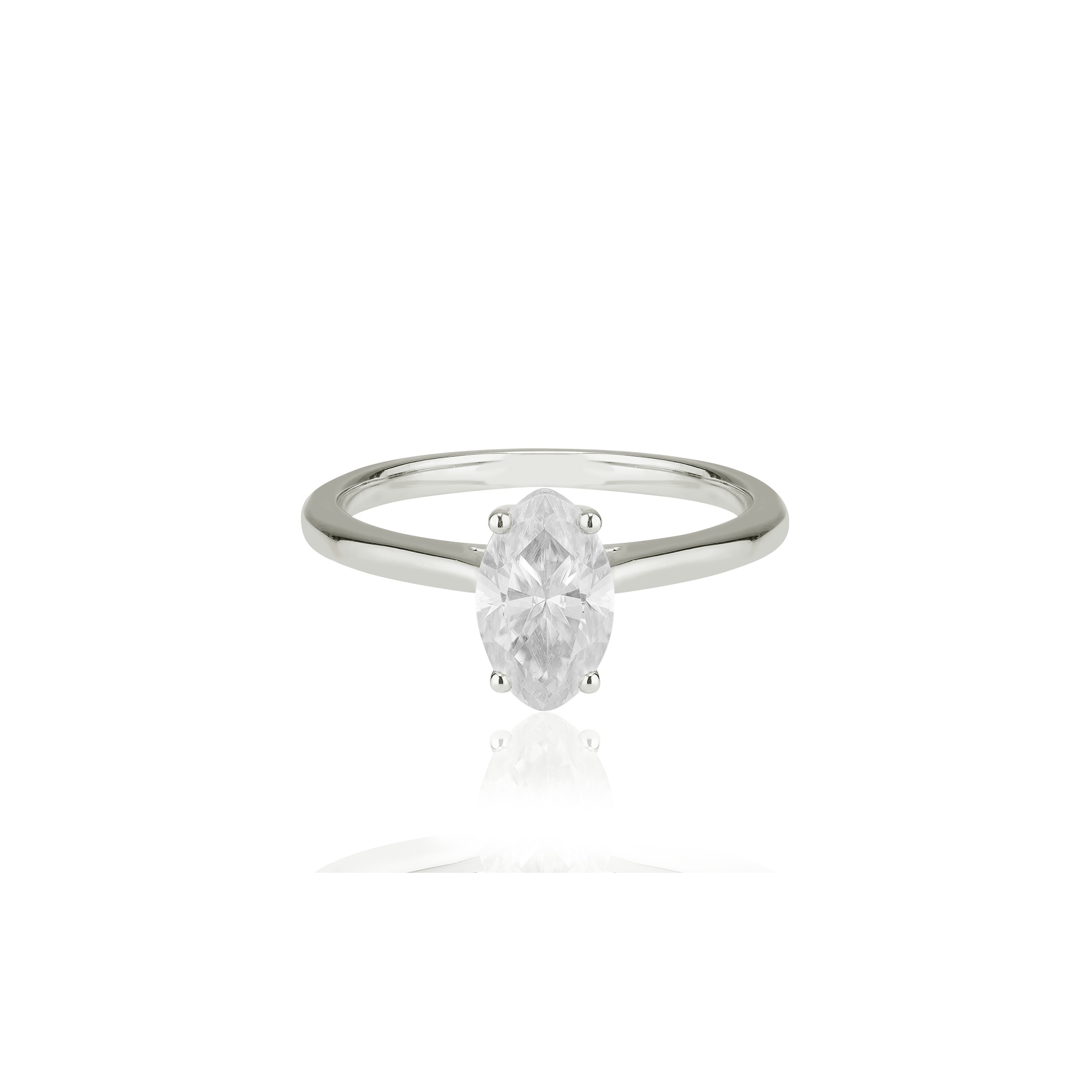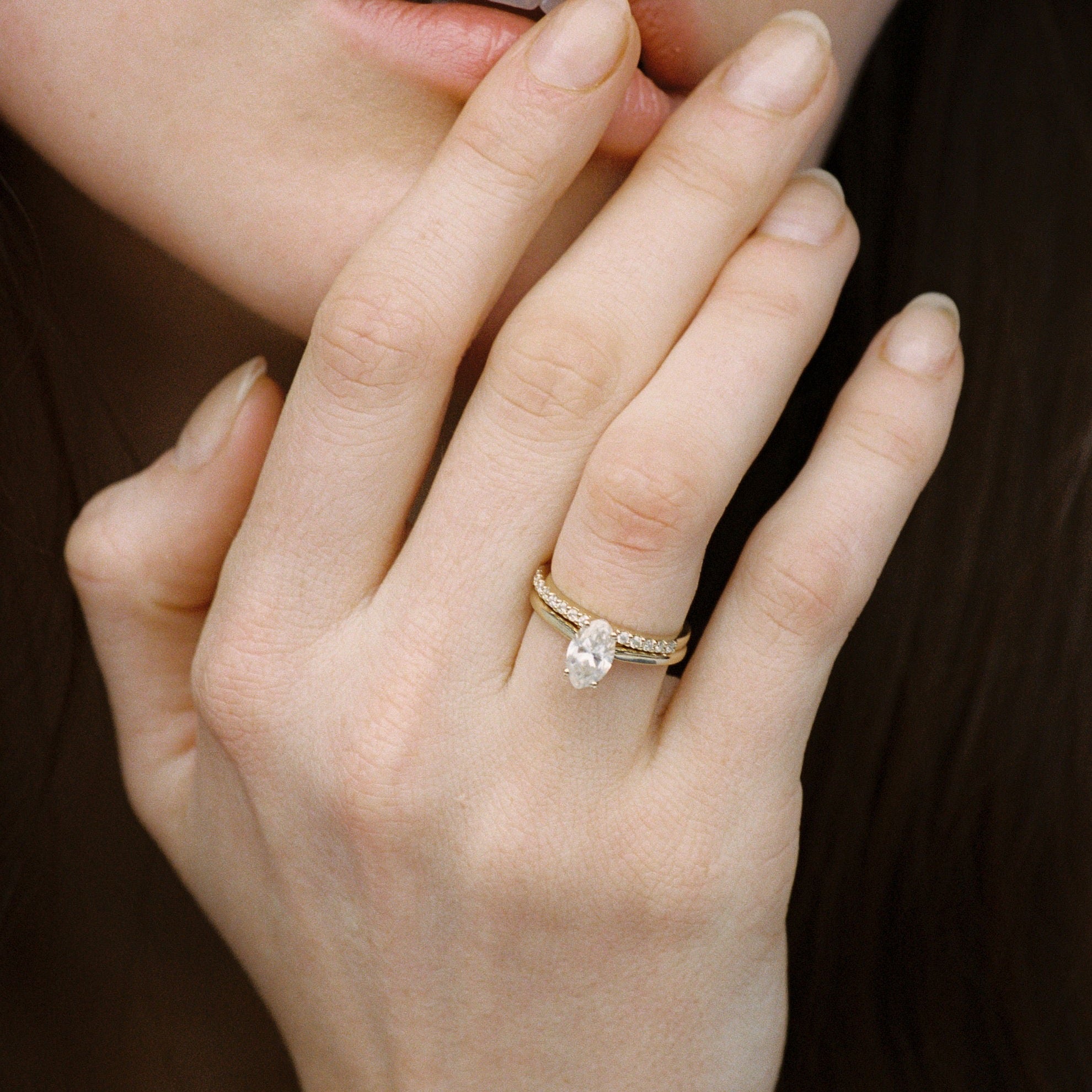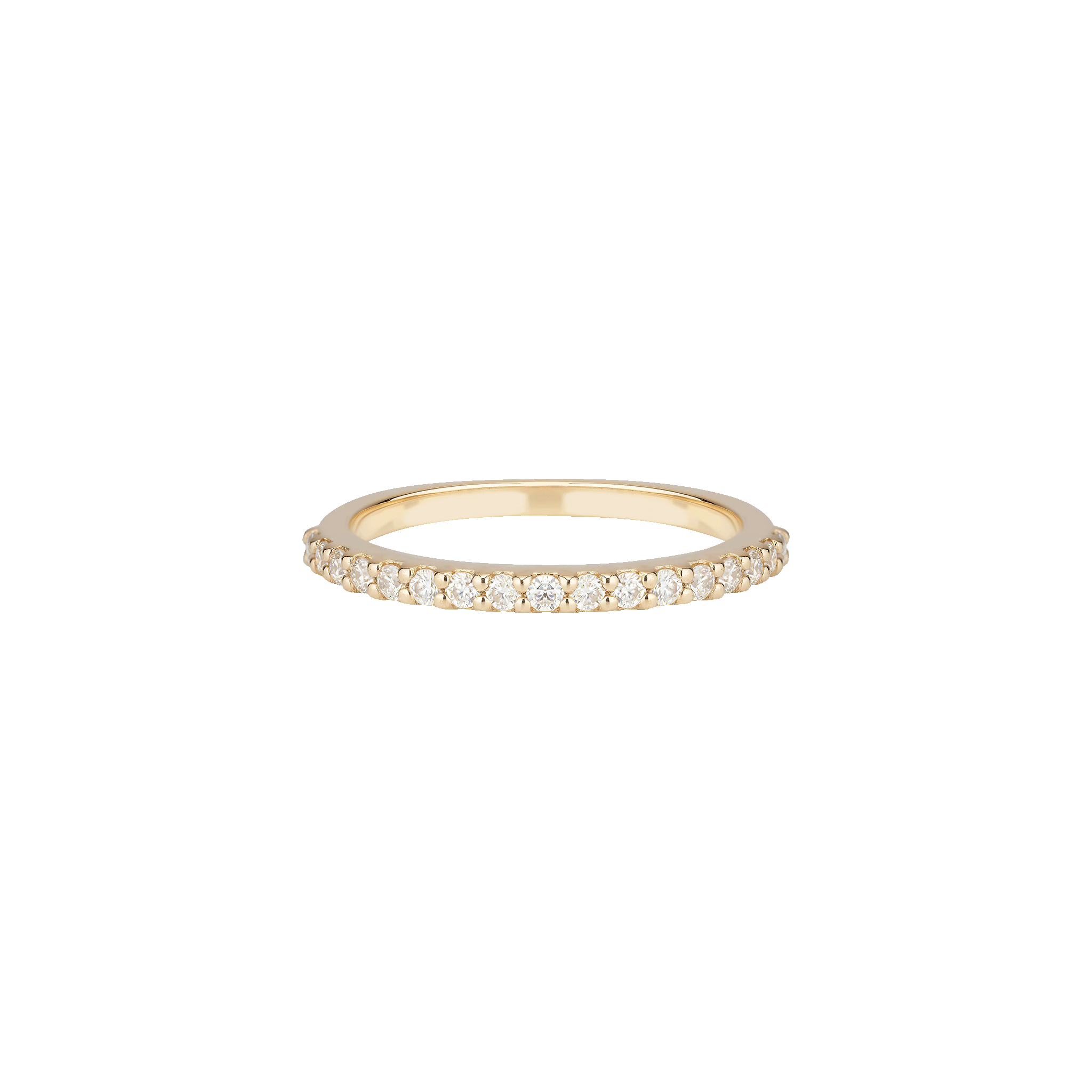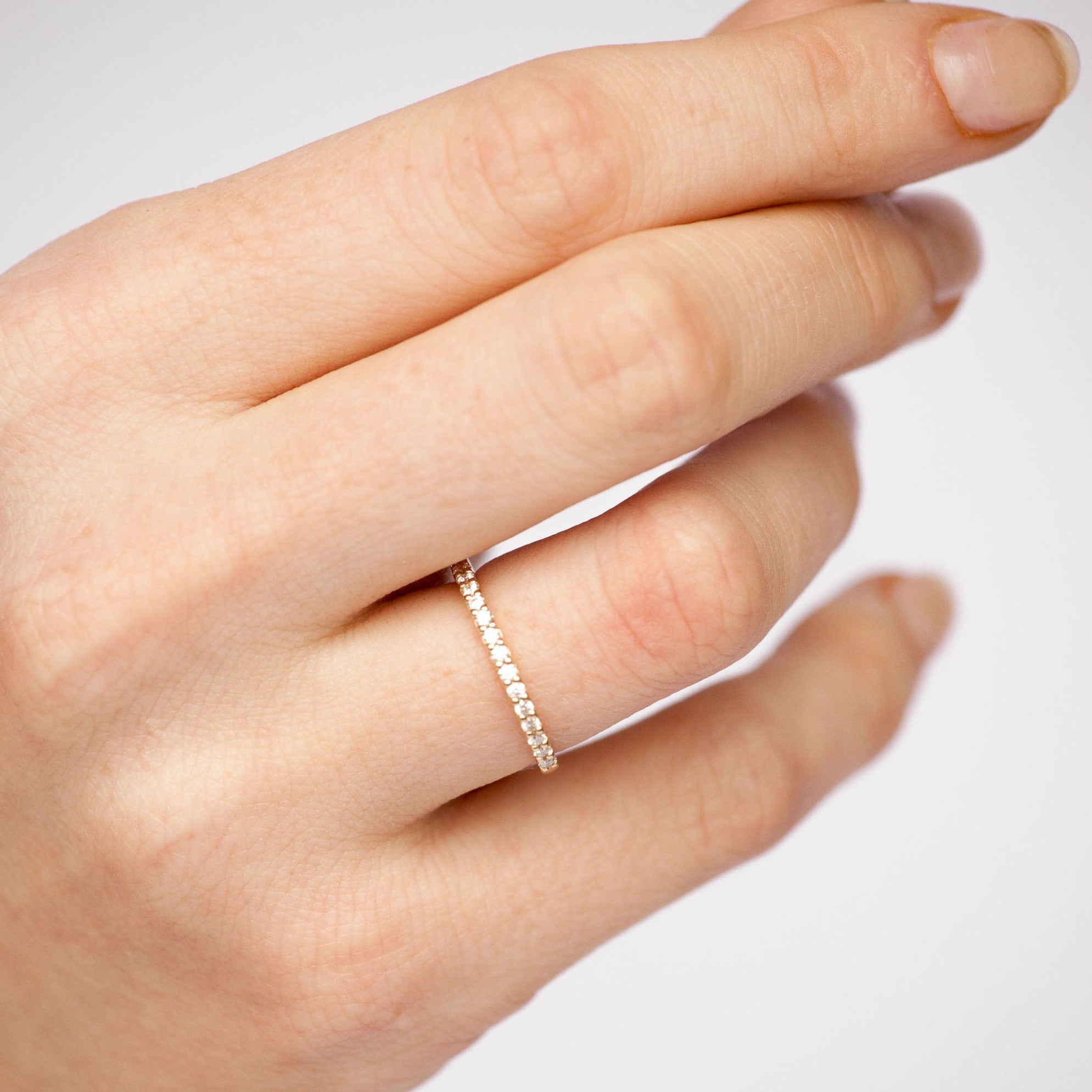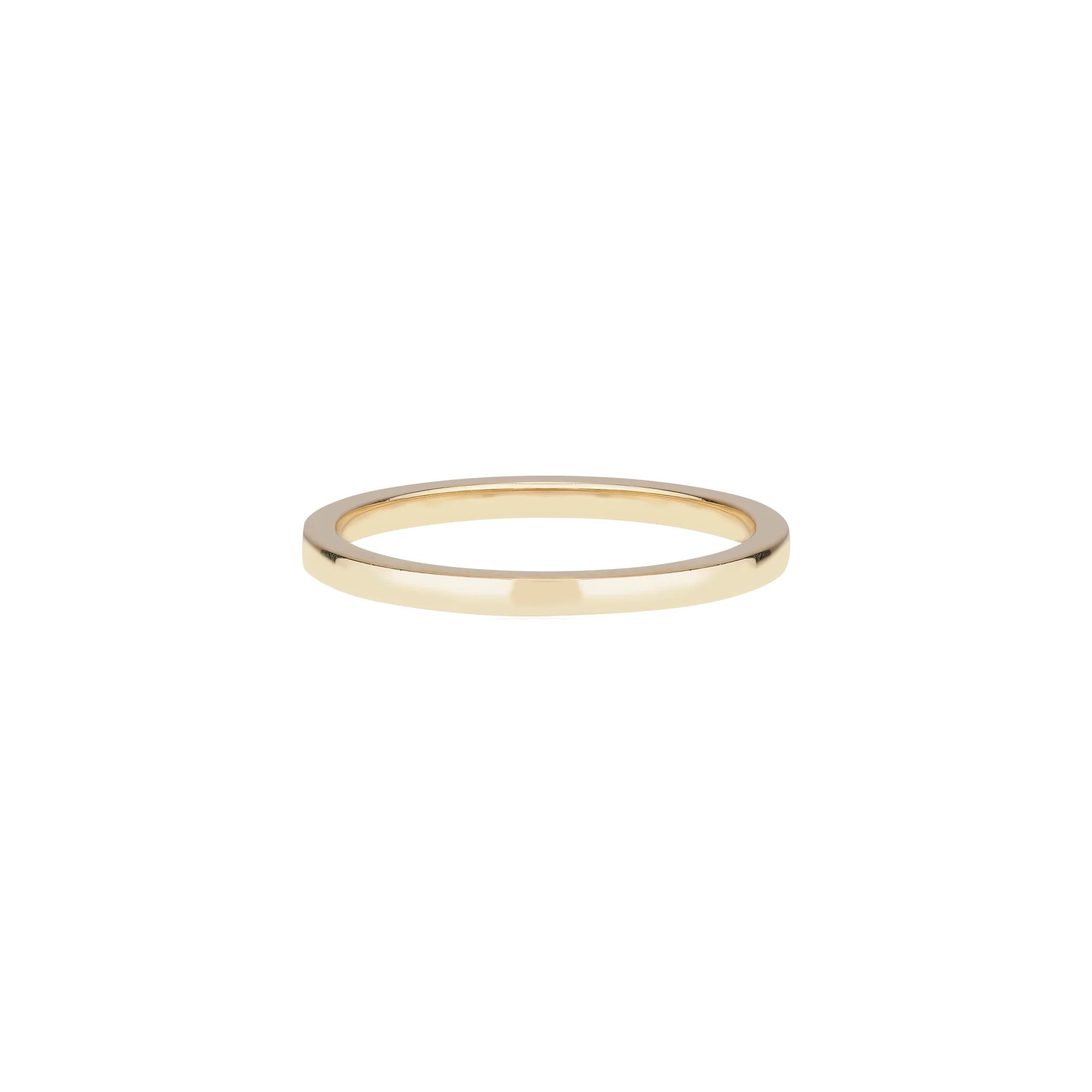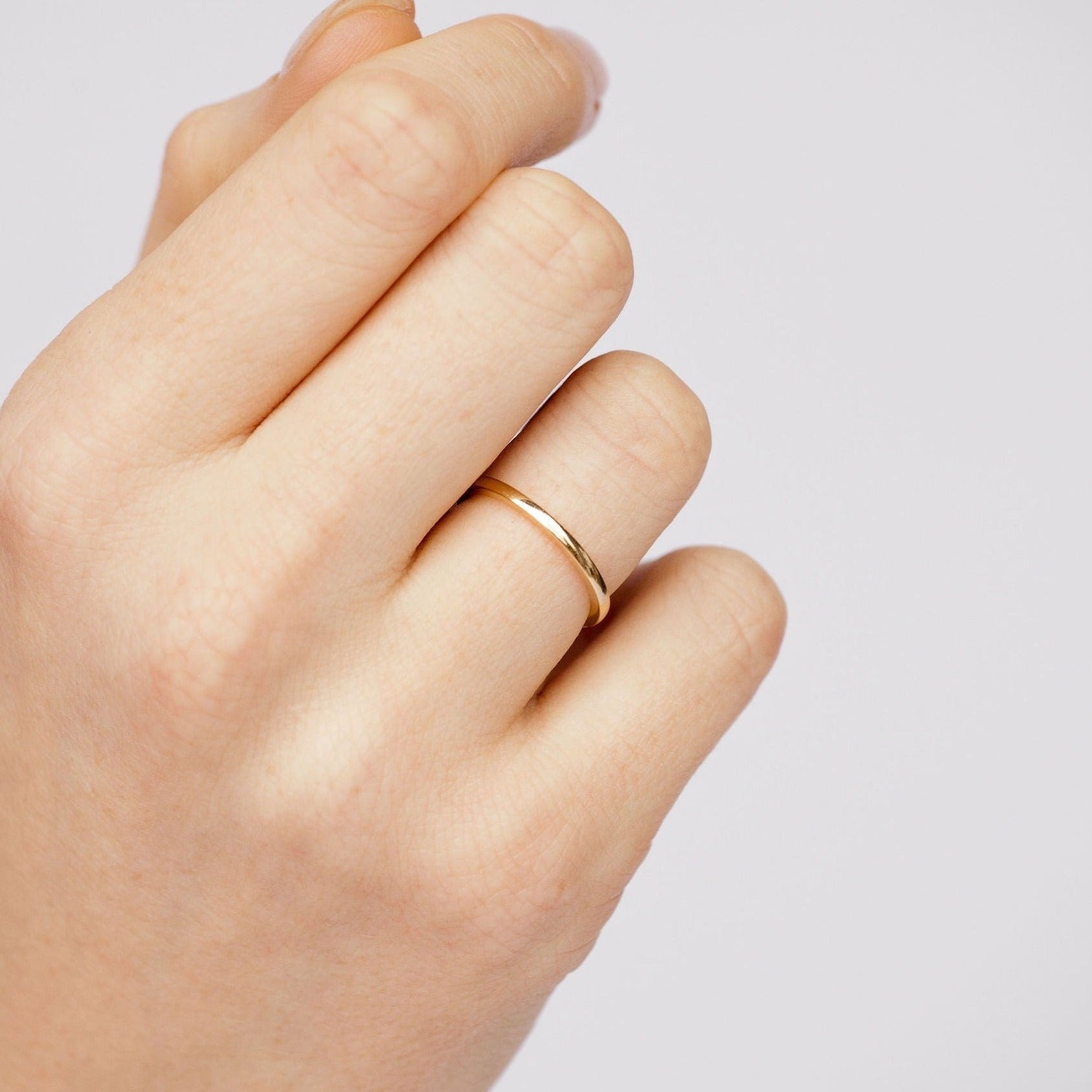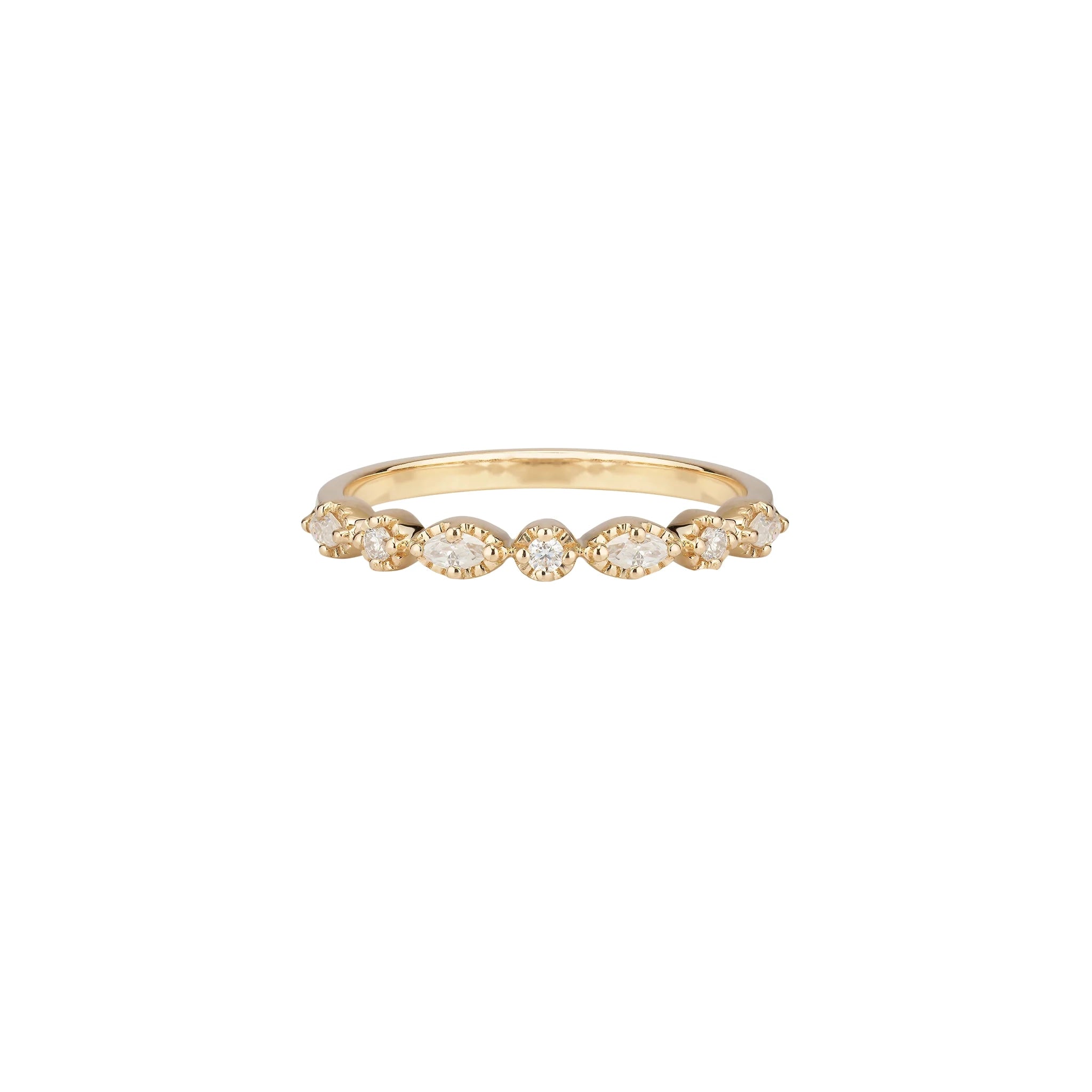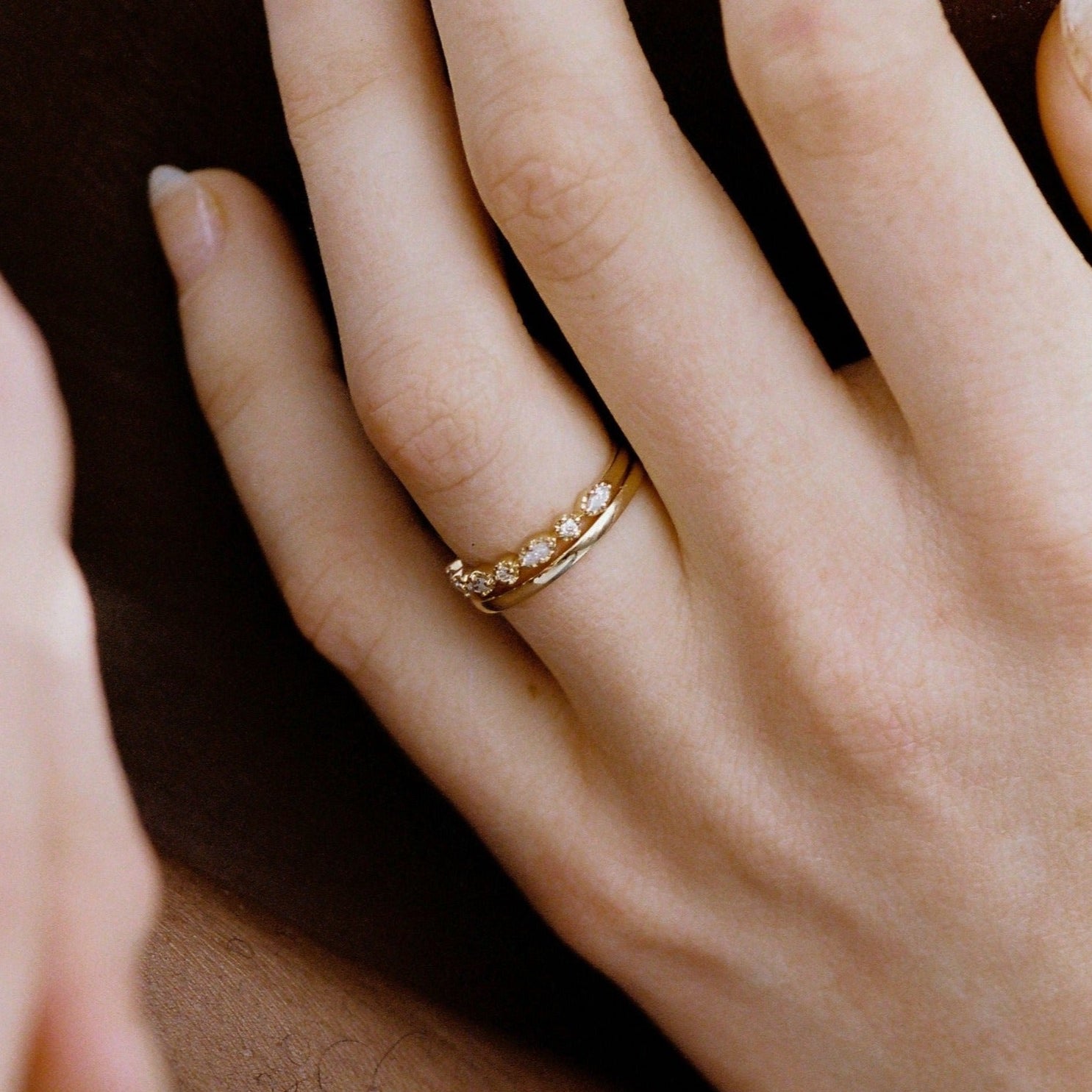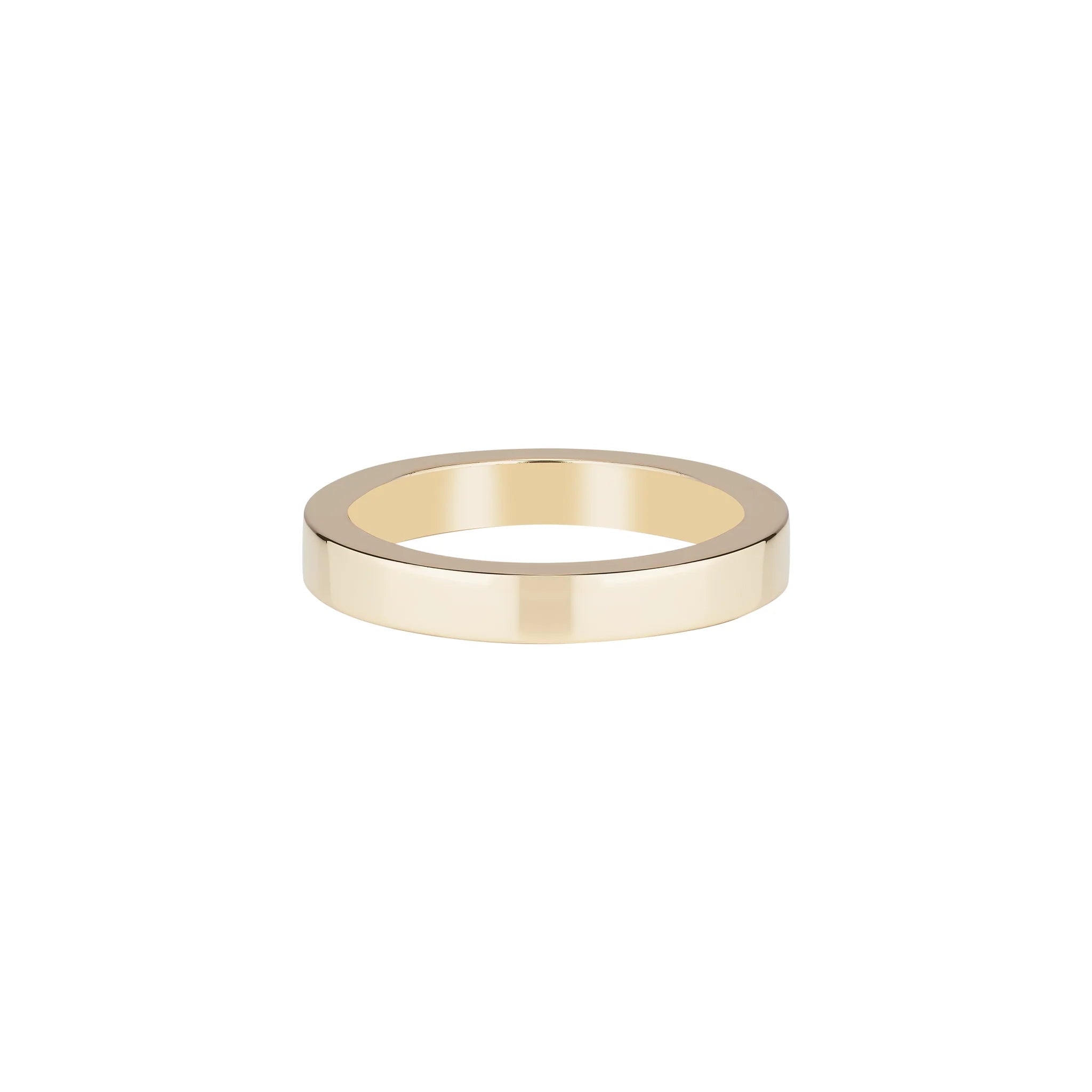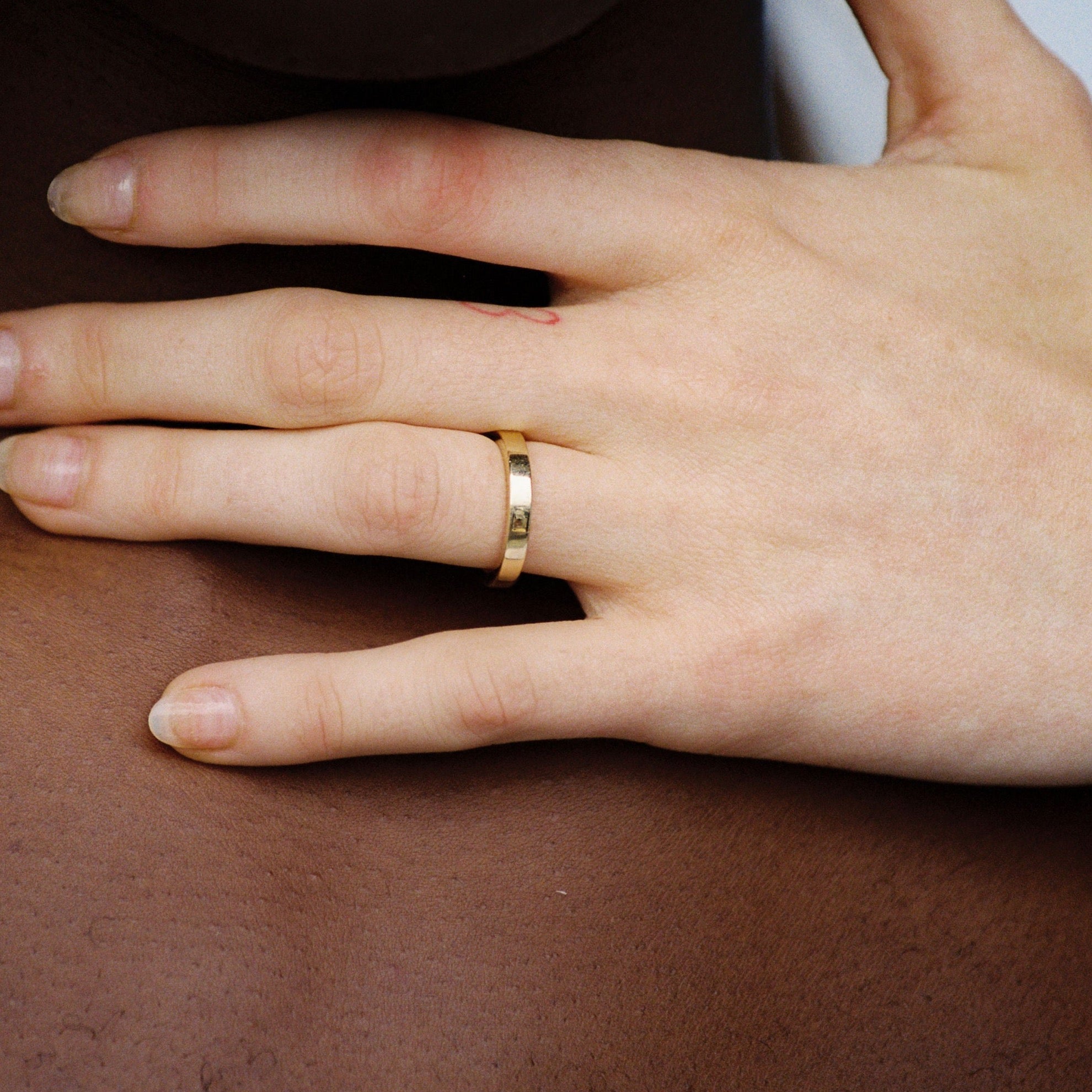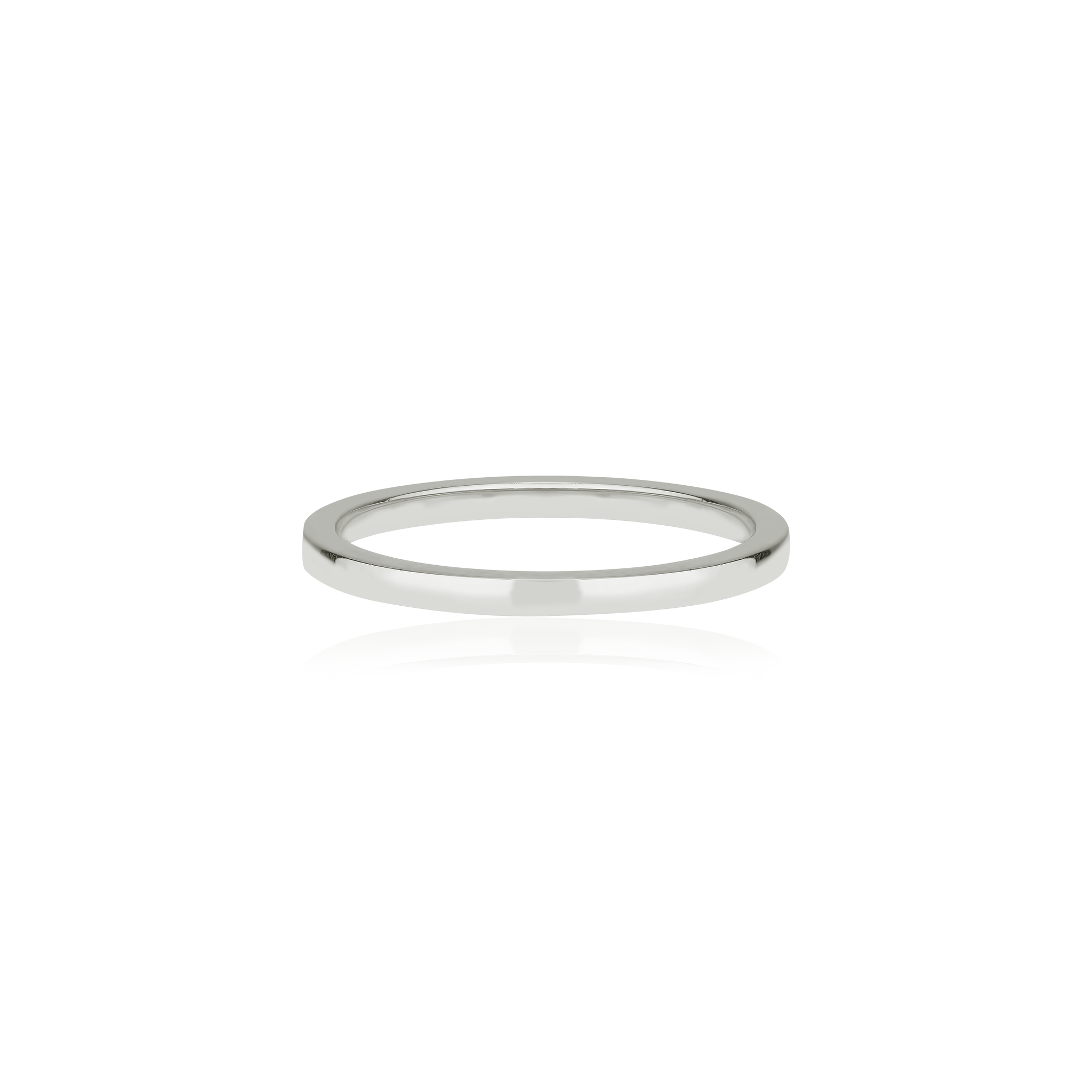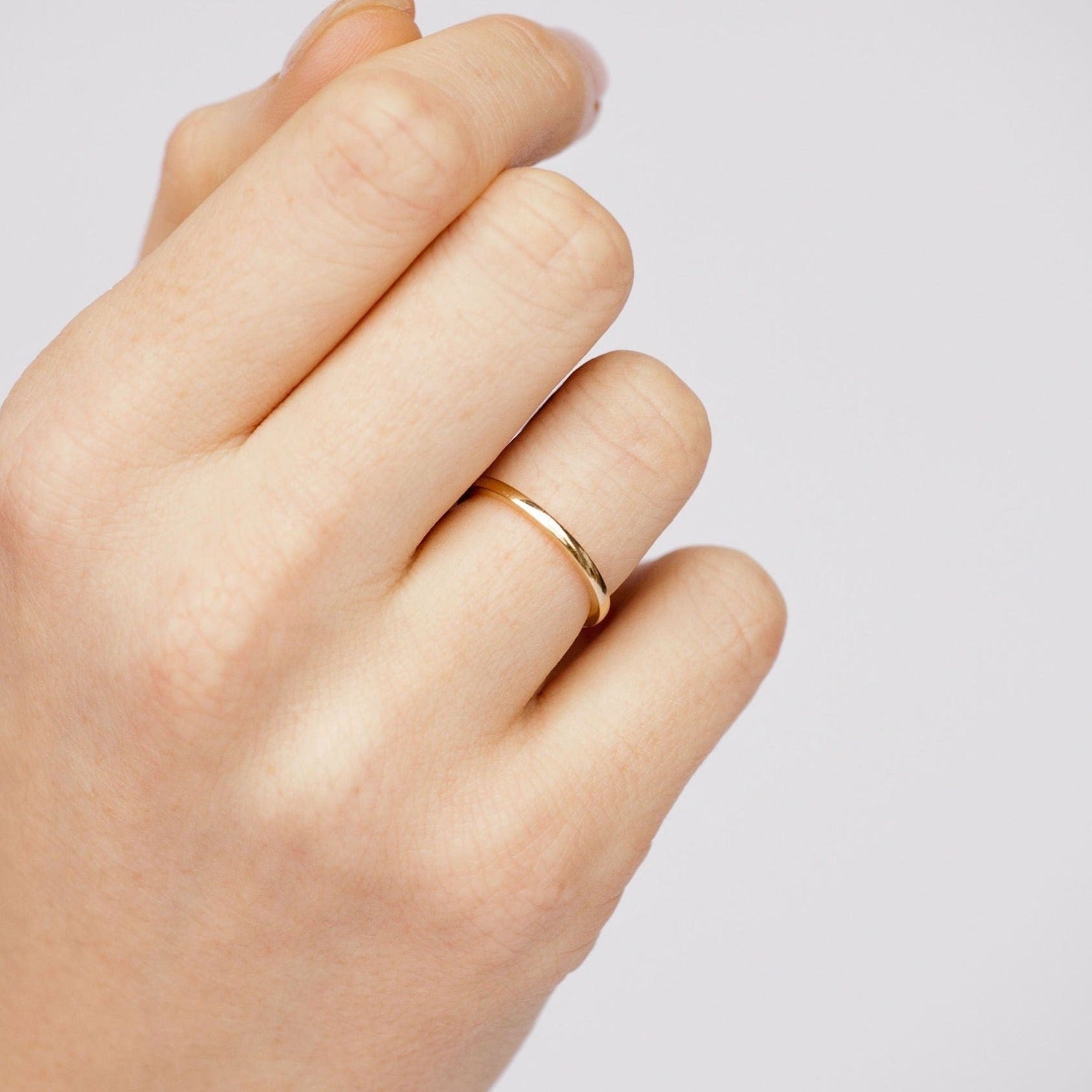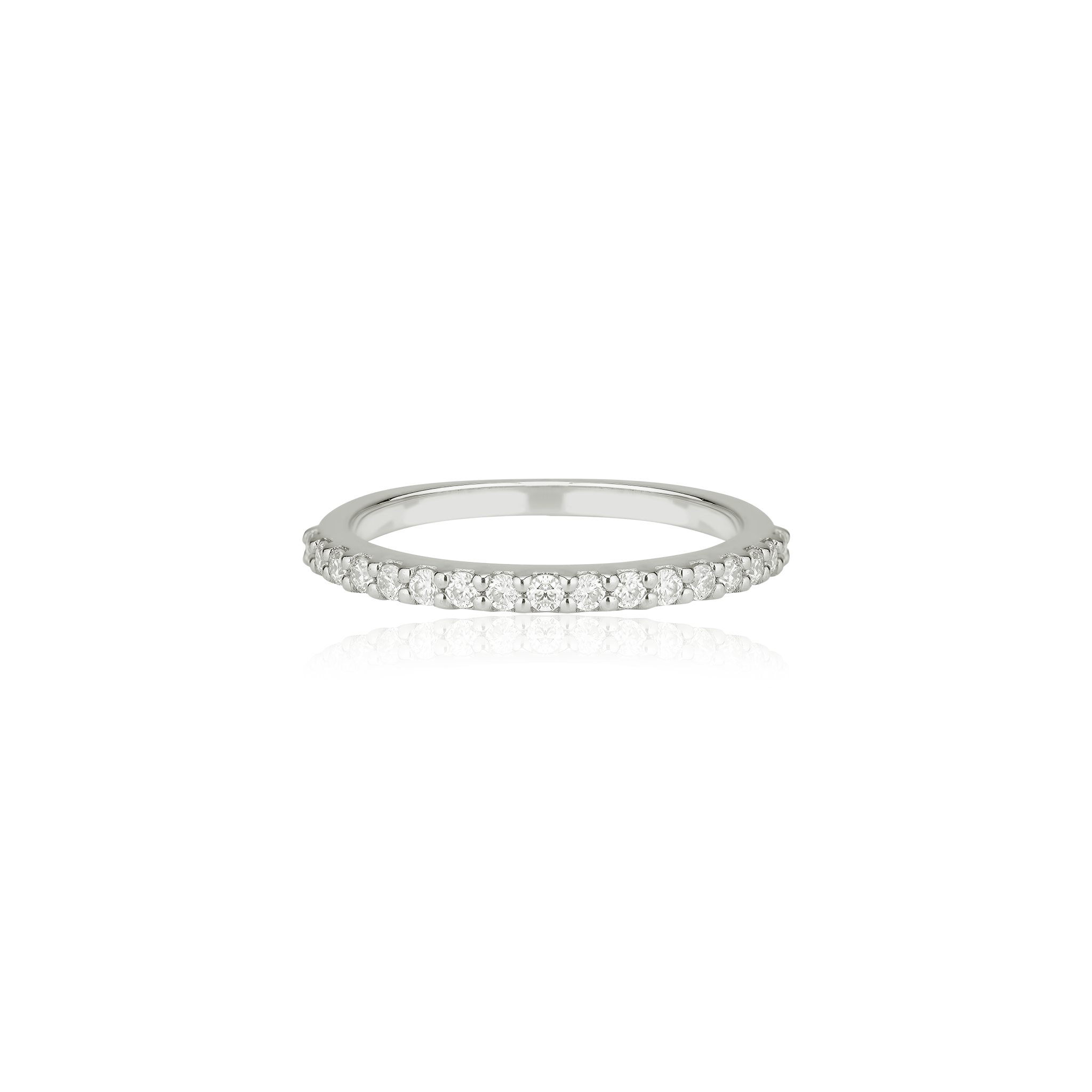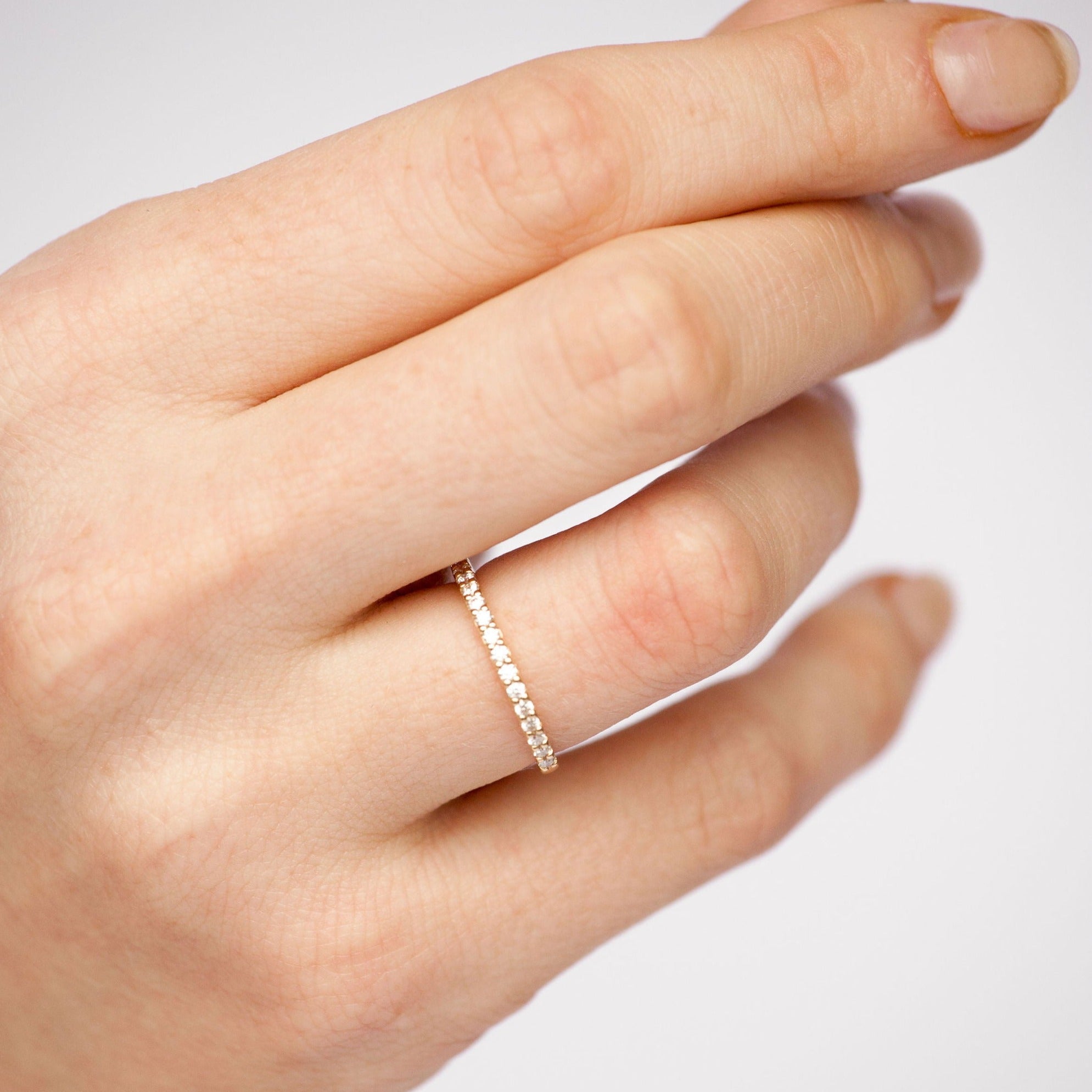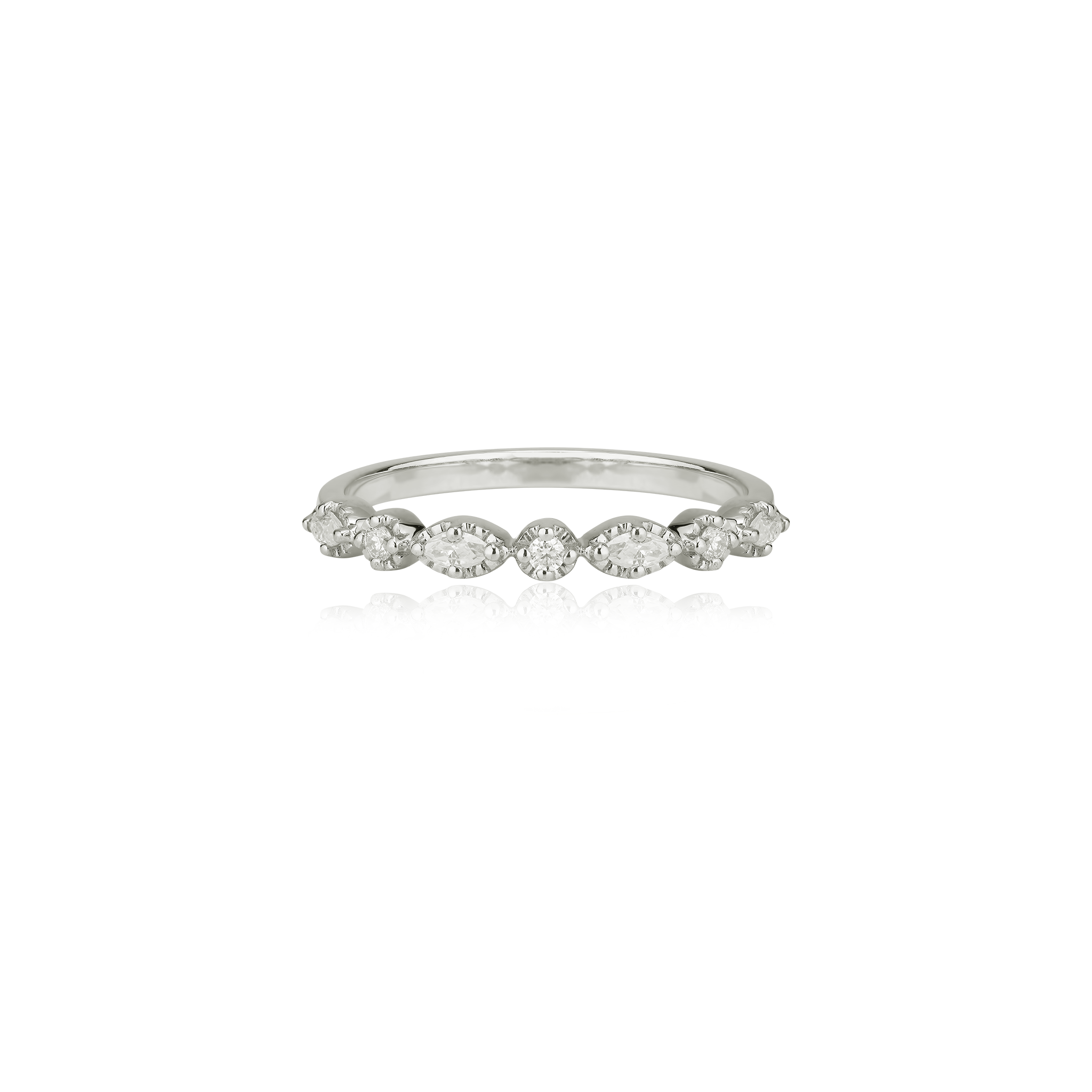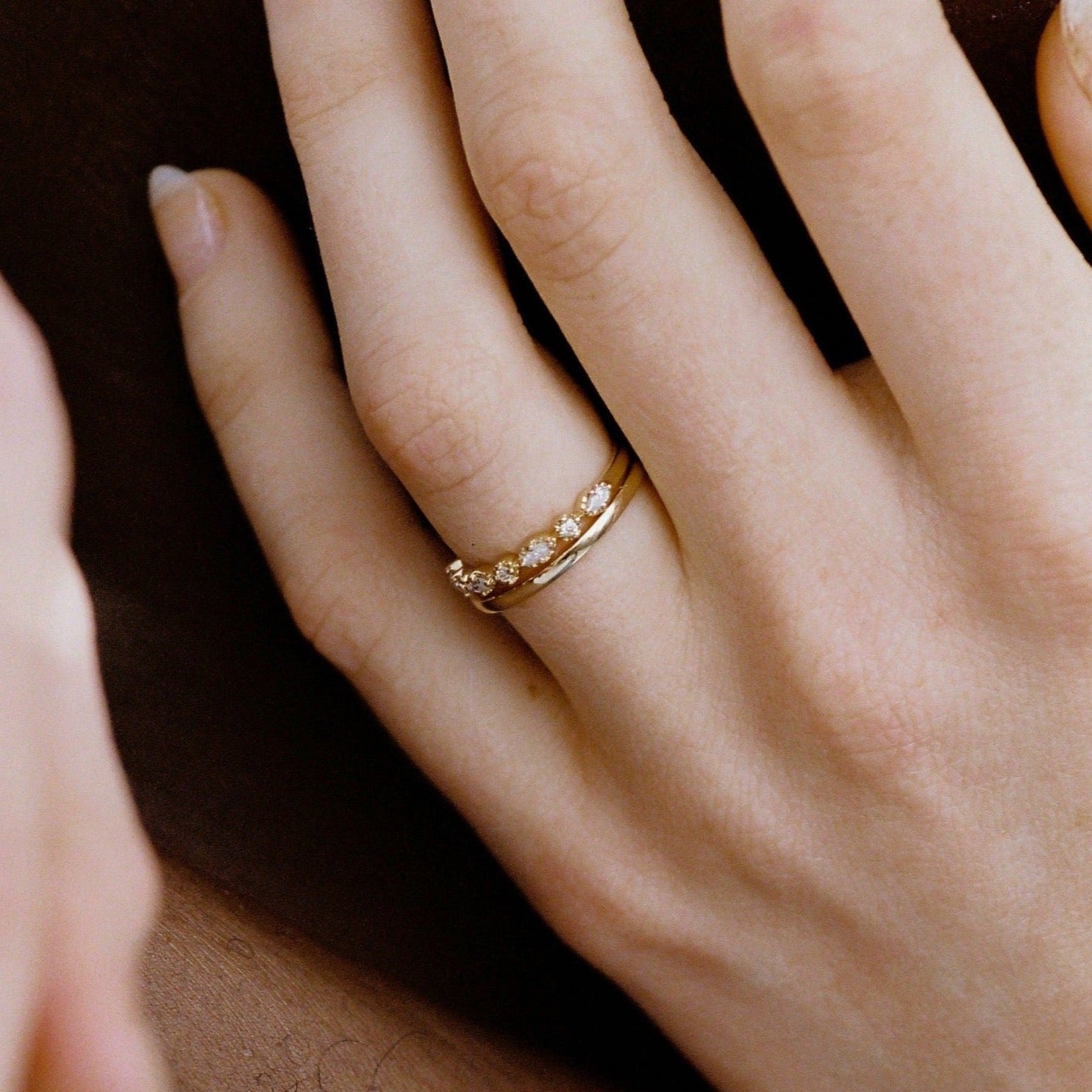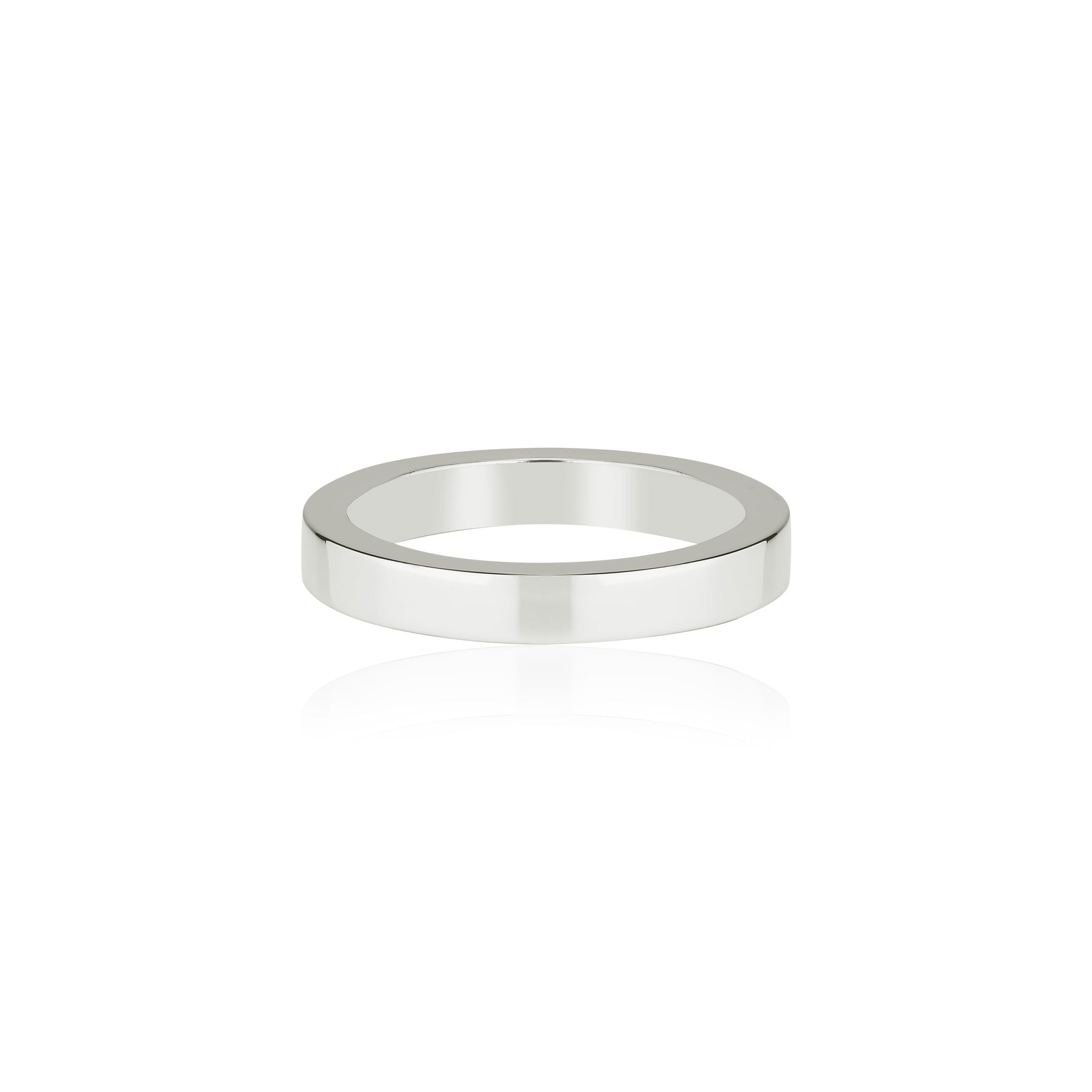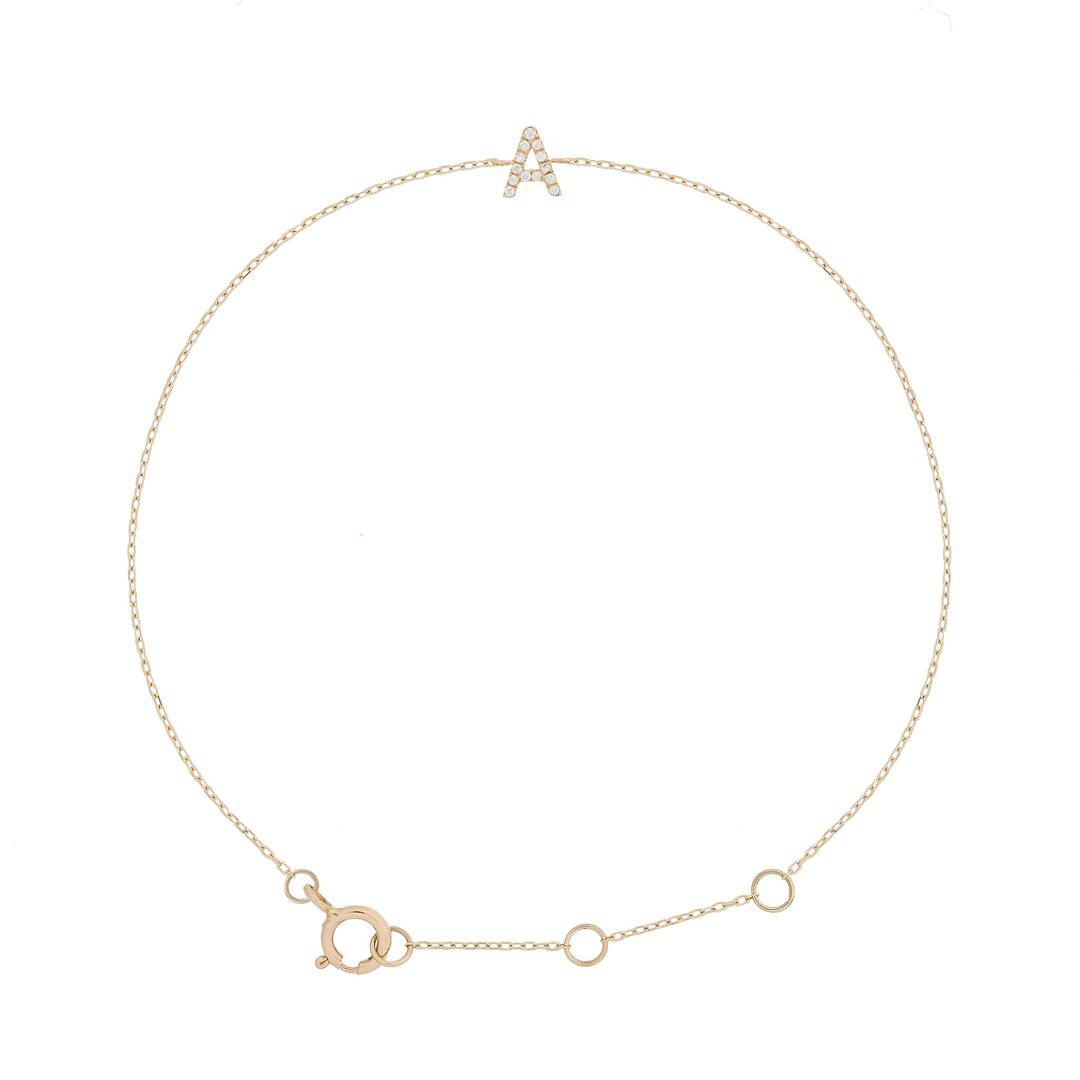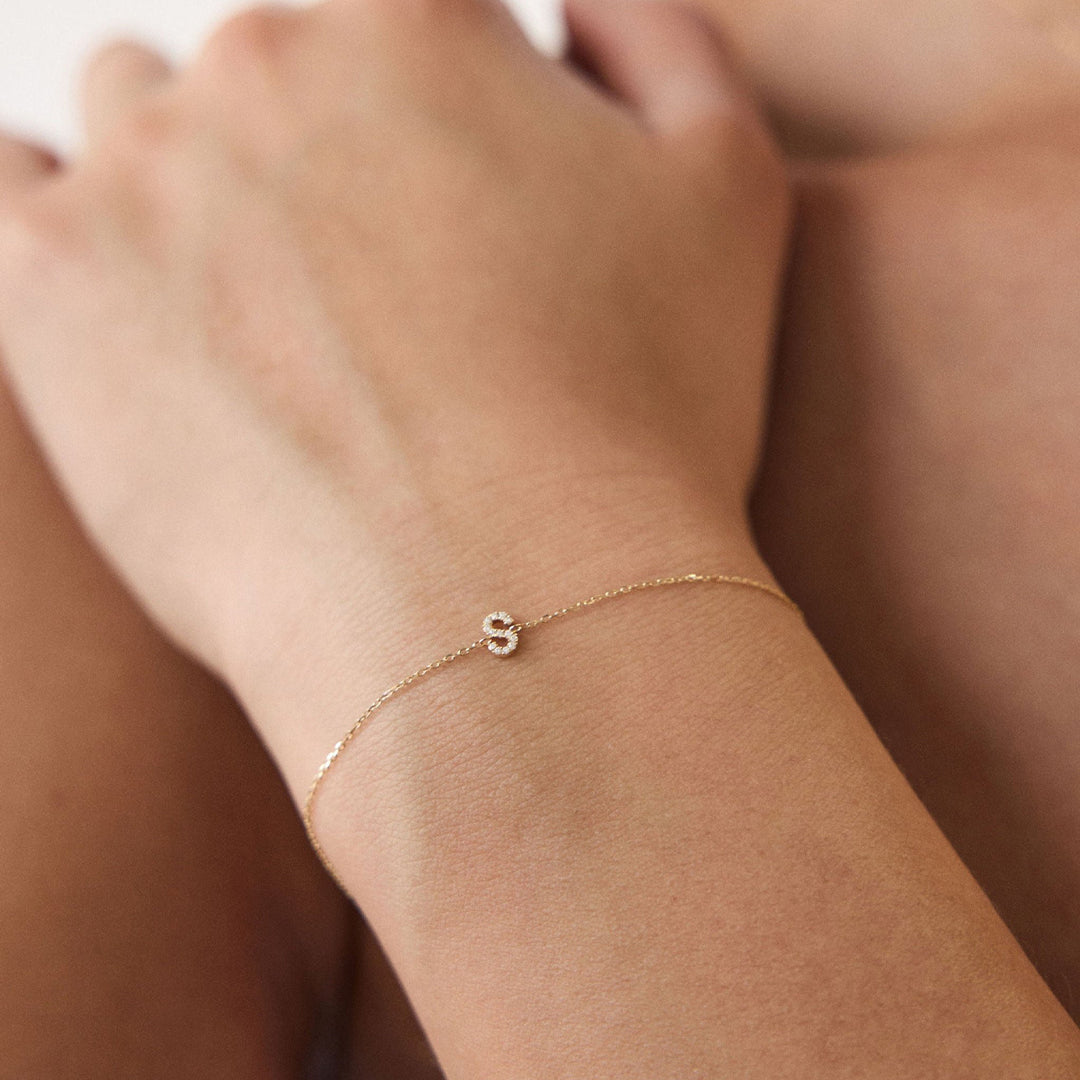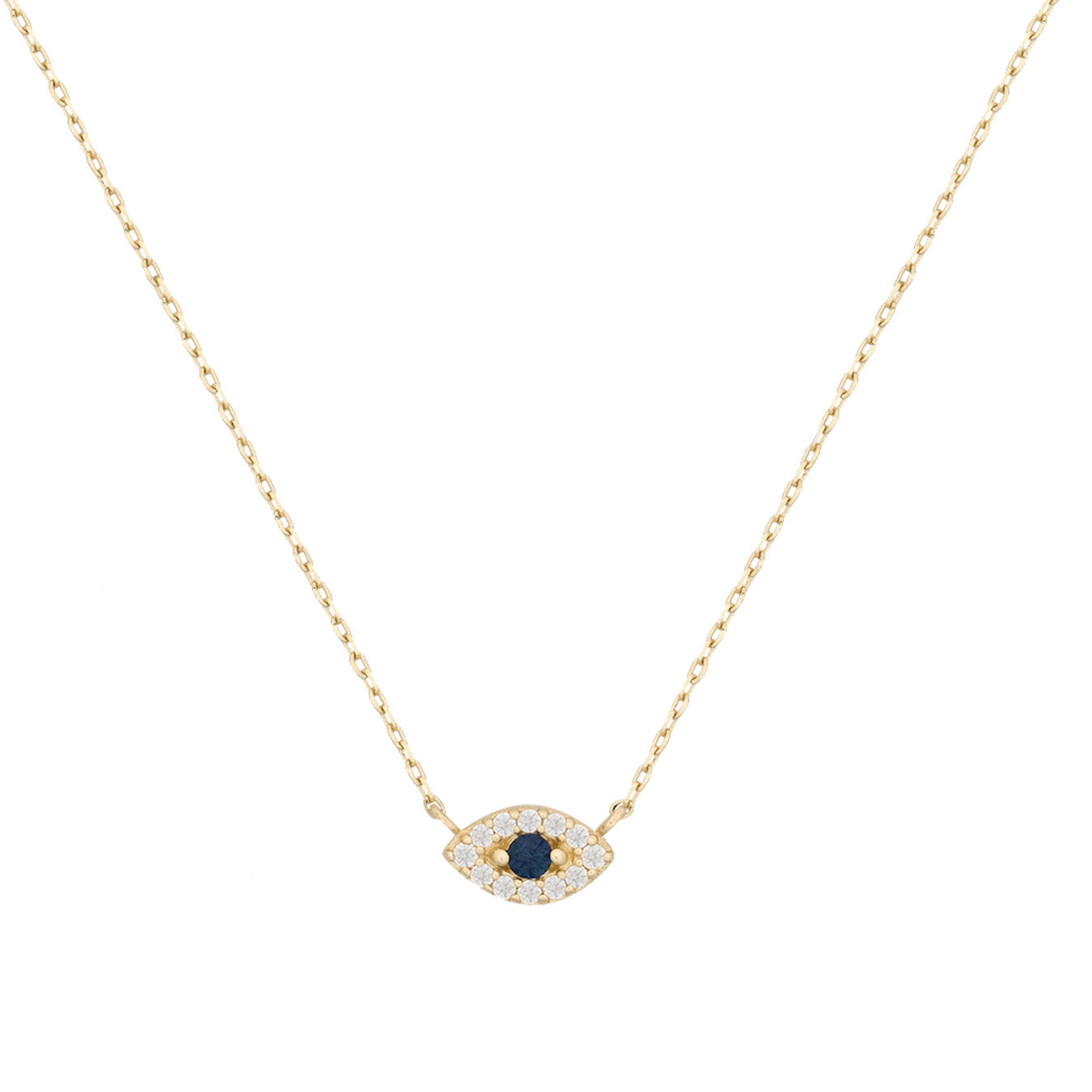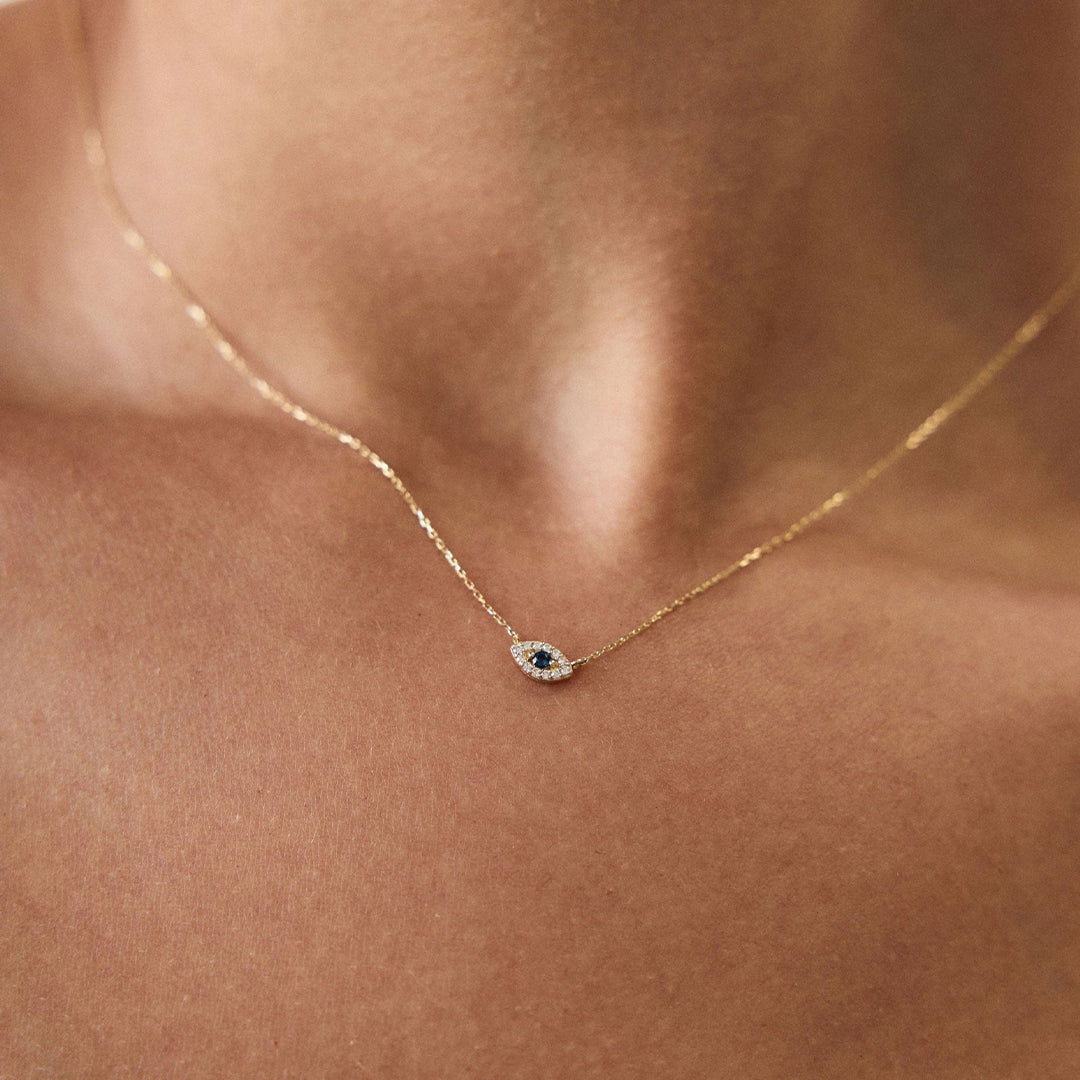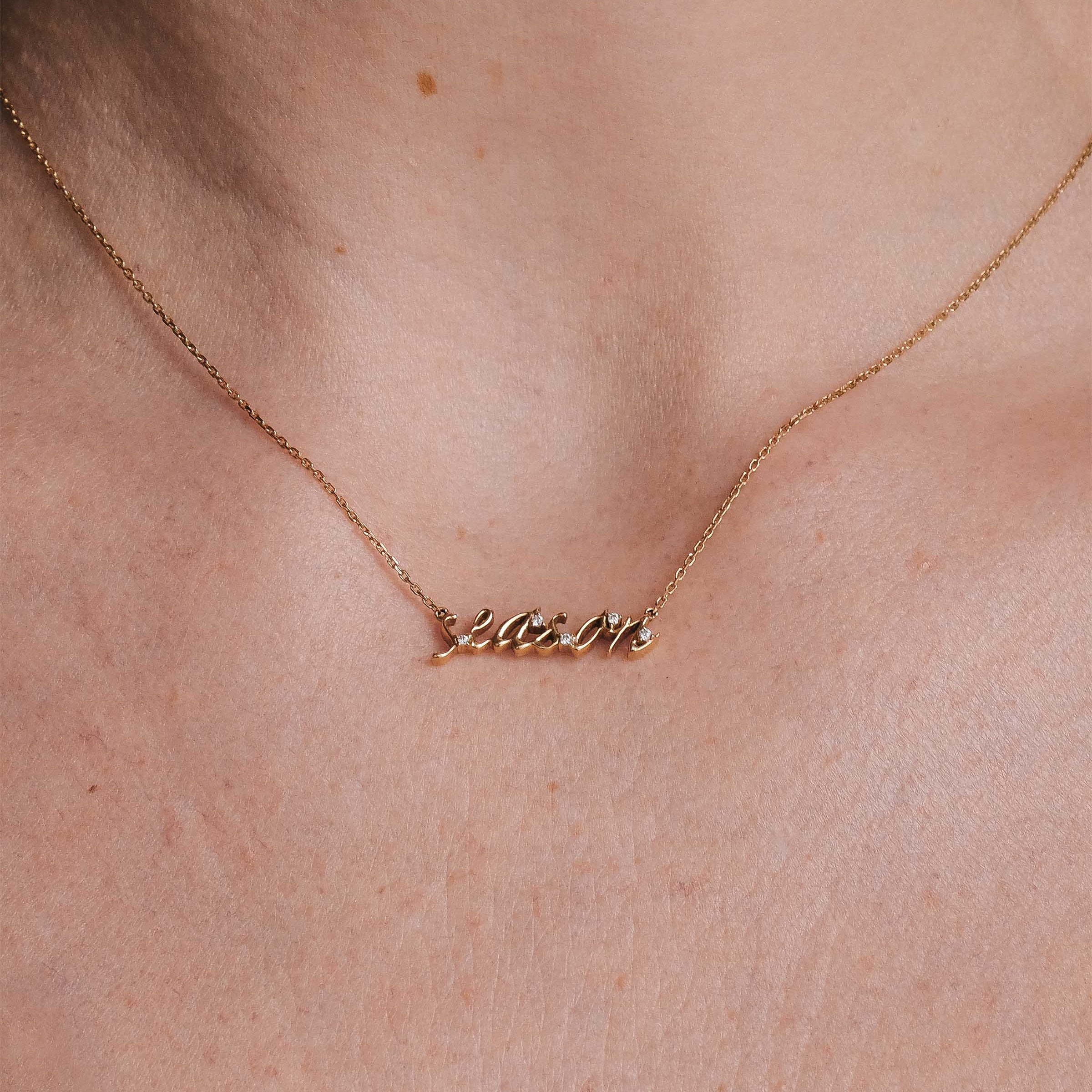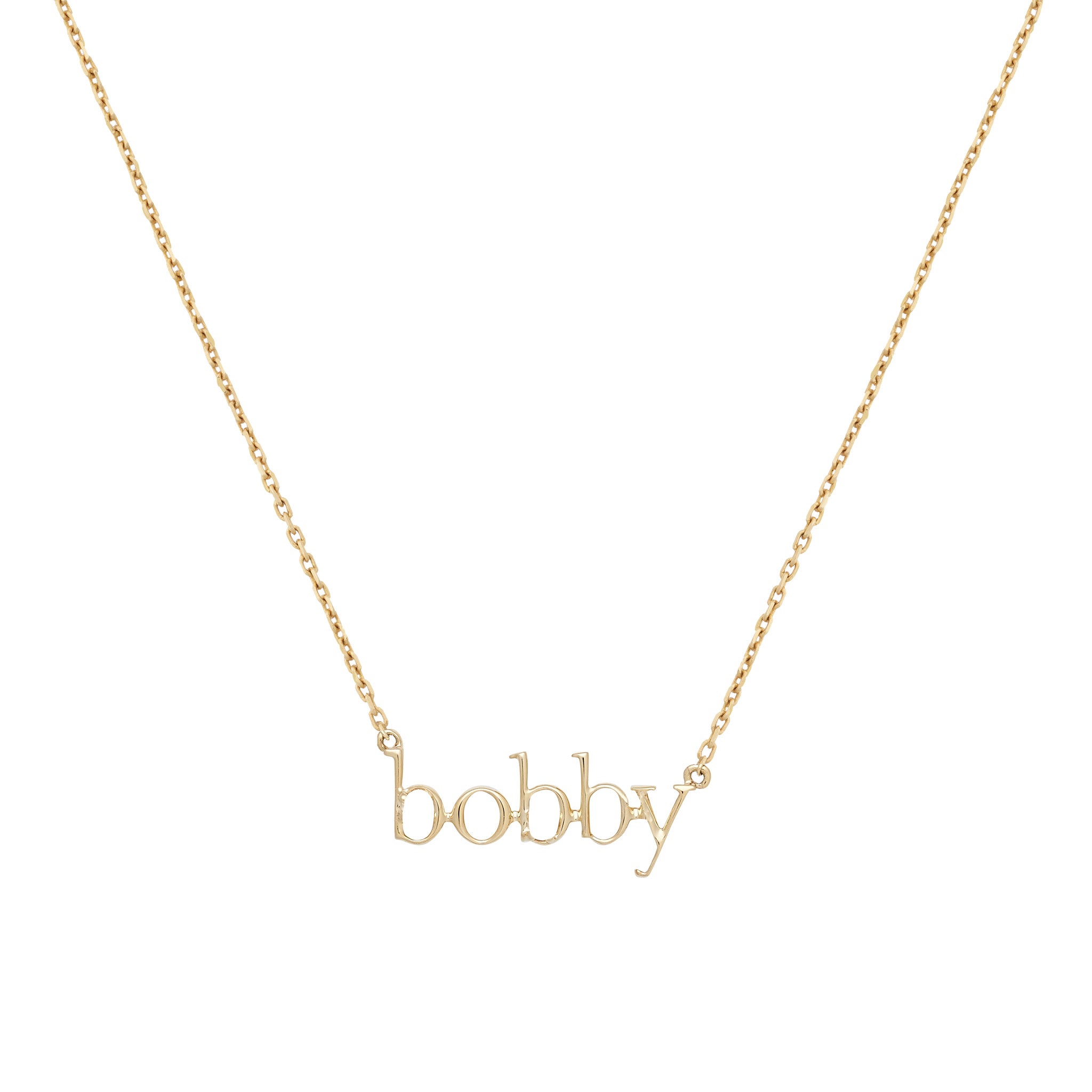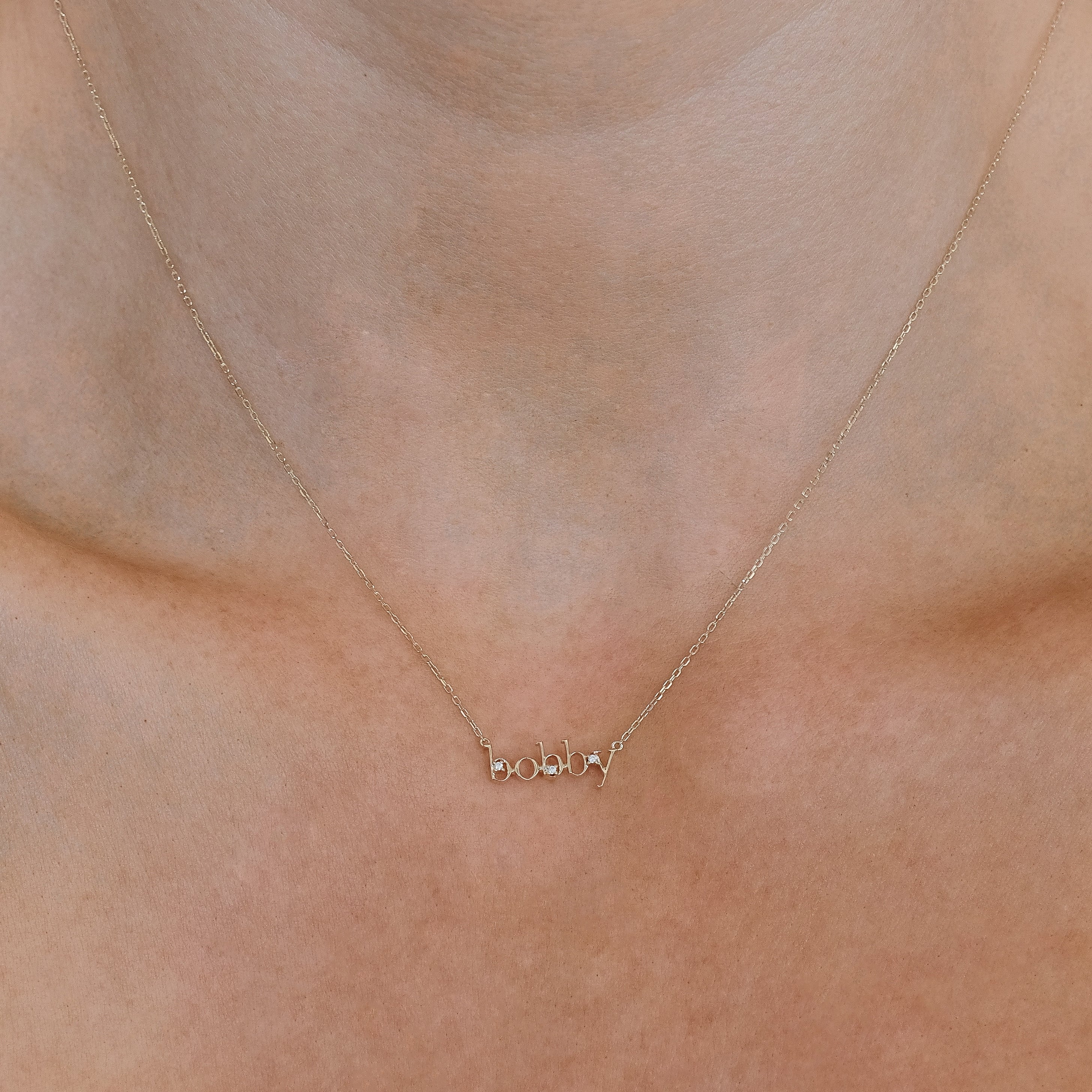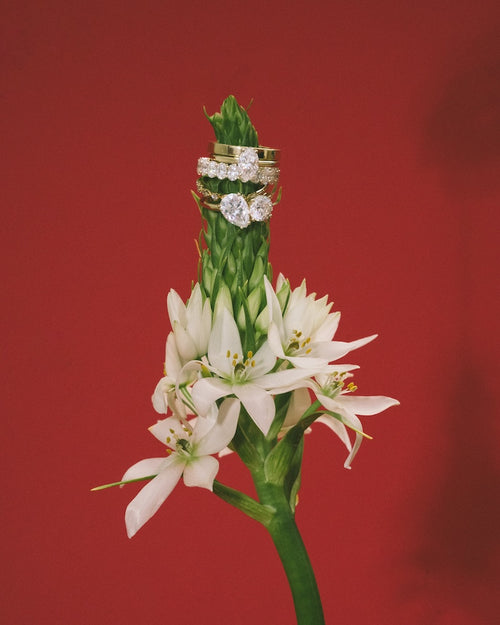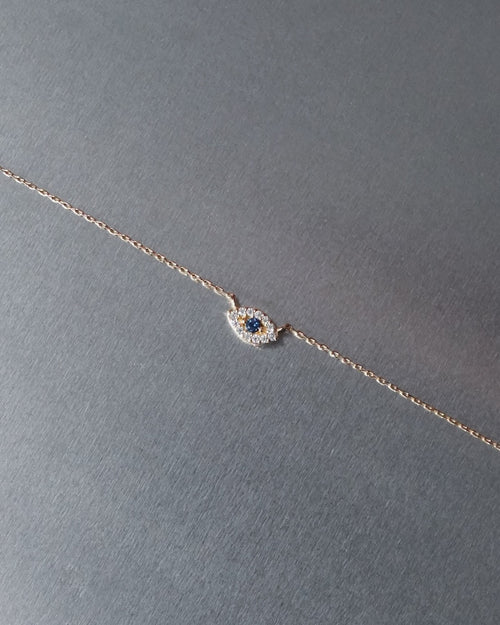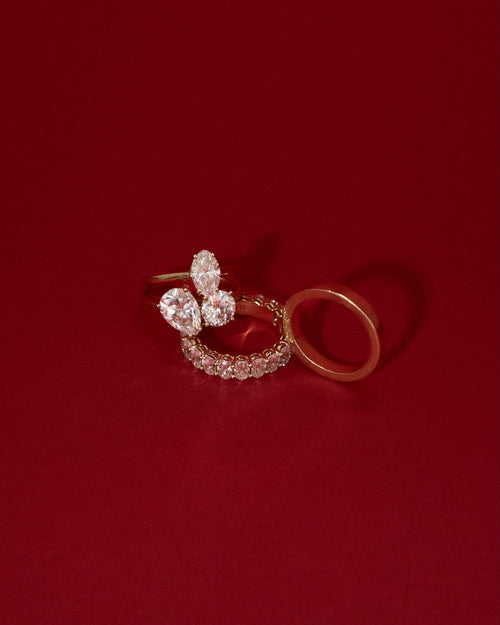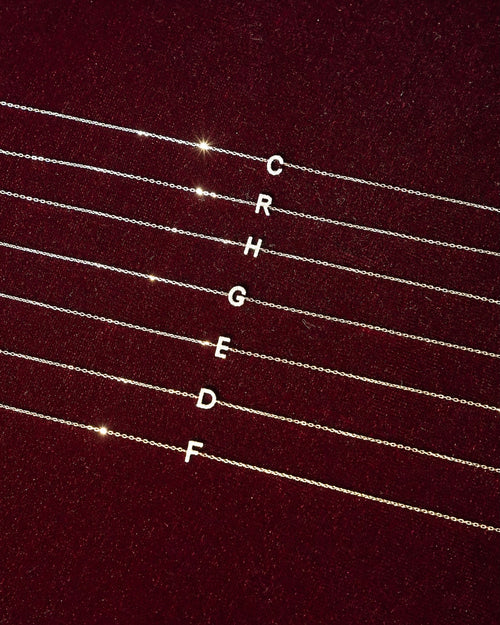Moissanite is a rare, naturally occurring mineral discovered by French chemist Dr. Henri Moissan at a meteorite strike site in Arizona in 1893. Following this discovery, a thermal growth process was developed to create the silicon carbide crystals that form moissanite gemstones today.
- Engagement Rings
- Wedding/Eternity Bands
- Jewellery
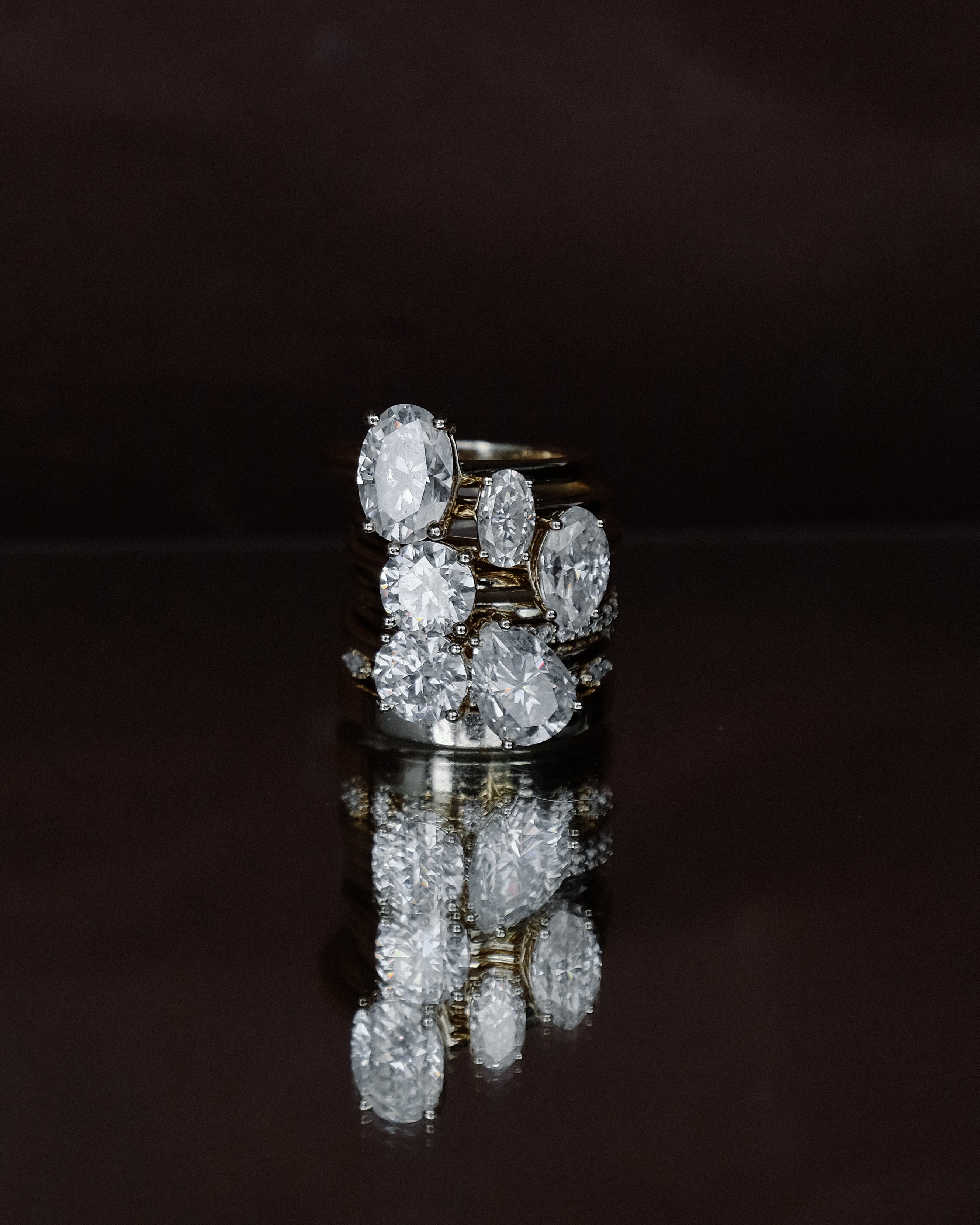
Explore our collection of moissanite engagement rings.
Toi Et Moi Moissanite Ring | Platinum
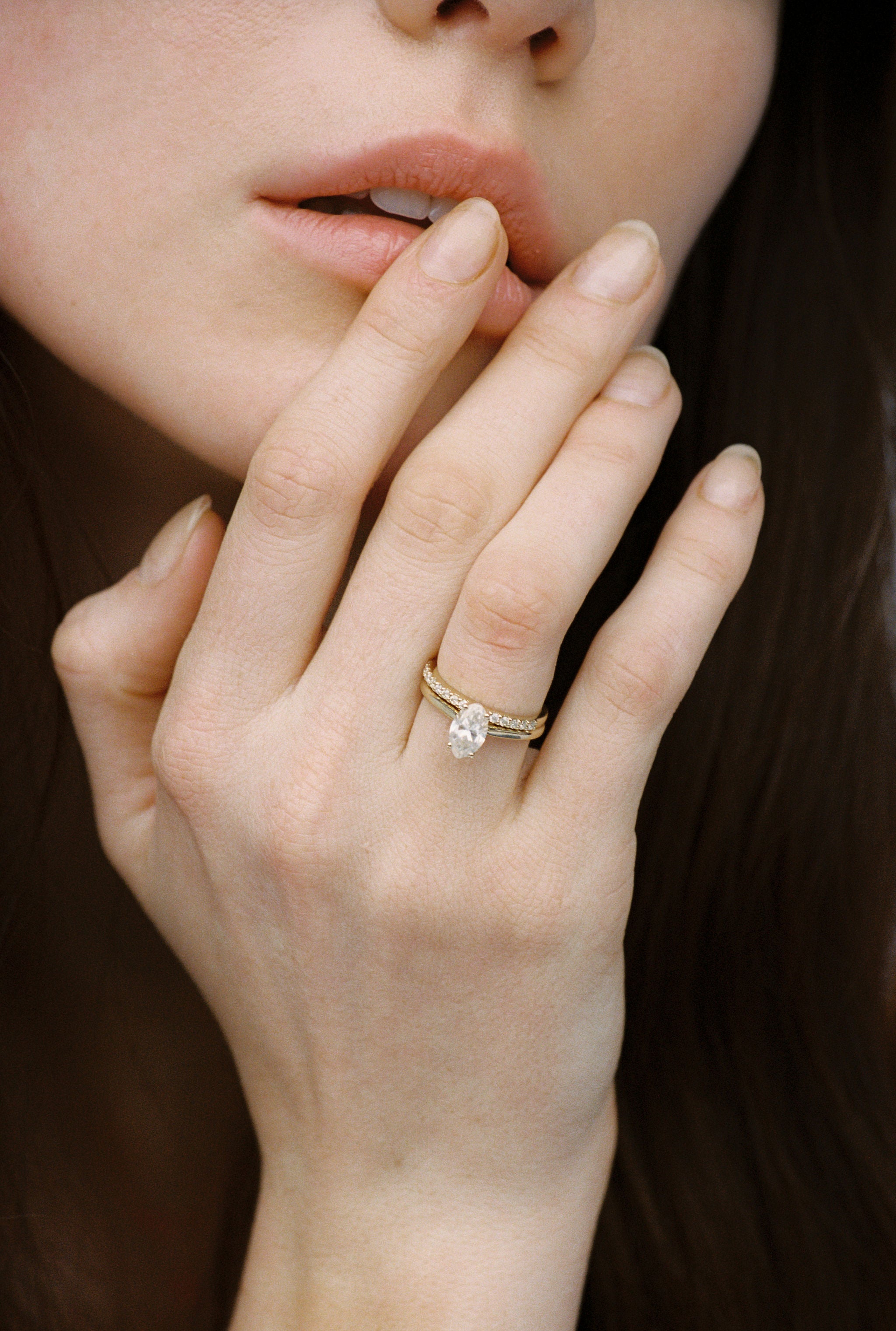
Explore our collection of wedding and eternity bands.
1.5mm Ring Band | 14k Solid Gold
1.5mm Ring Band | Platinum
Pavé Moissanite Ring Band | Platinum
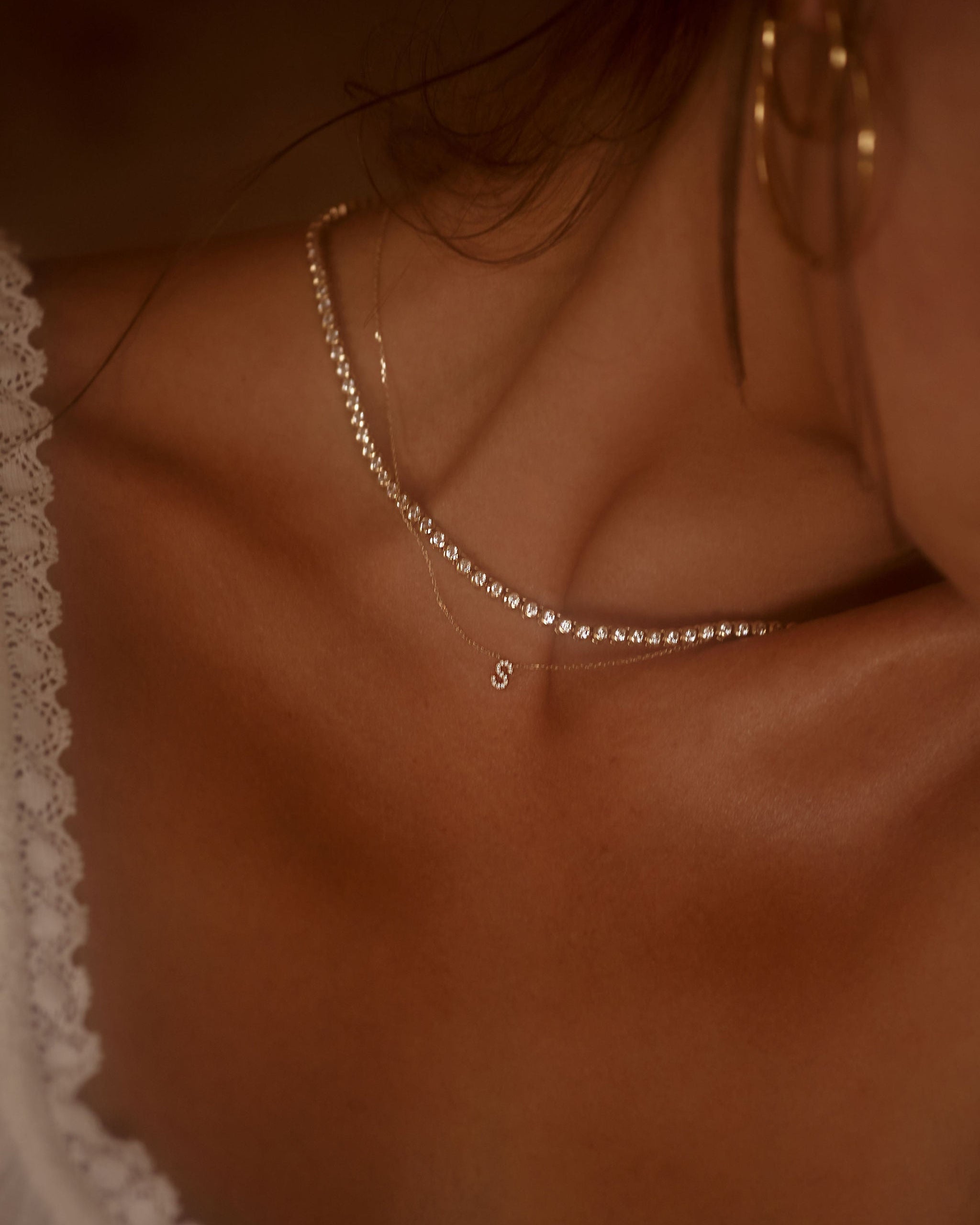
Solid gold necklaces and bracelets with Moissanite stones.
Comittment to Quality
We’ve spent nearly a decade perfecting our moissanite designs—there’s a reason our rings sparkle like no other.
Durability
Moissanite scores 9.25 on the MOH'S Scale of Hardness, making it one of the hardest substances on Earth.
Brilliance
Moissanite has a high refractive index (2.65 – 2.69), giving it exceptional sparkle.
Grade & Clarity
We use D-colour, VVS1 clarity moissanite, meaning each stone is near flawless with exceptional brilliance and fire.
Sustainability
Moissanite eliminates the risk of environmental destruction, unethical labor practices, or conflict funding—making it a consciously sourced choice.
Moissanite VS. Diamond
At YCL, we’re committed to sustainability, which is why we choose moissanite over diamonds for our designs. If you’re curious about how the two compare, here’s a breakdown:
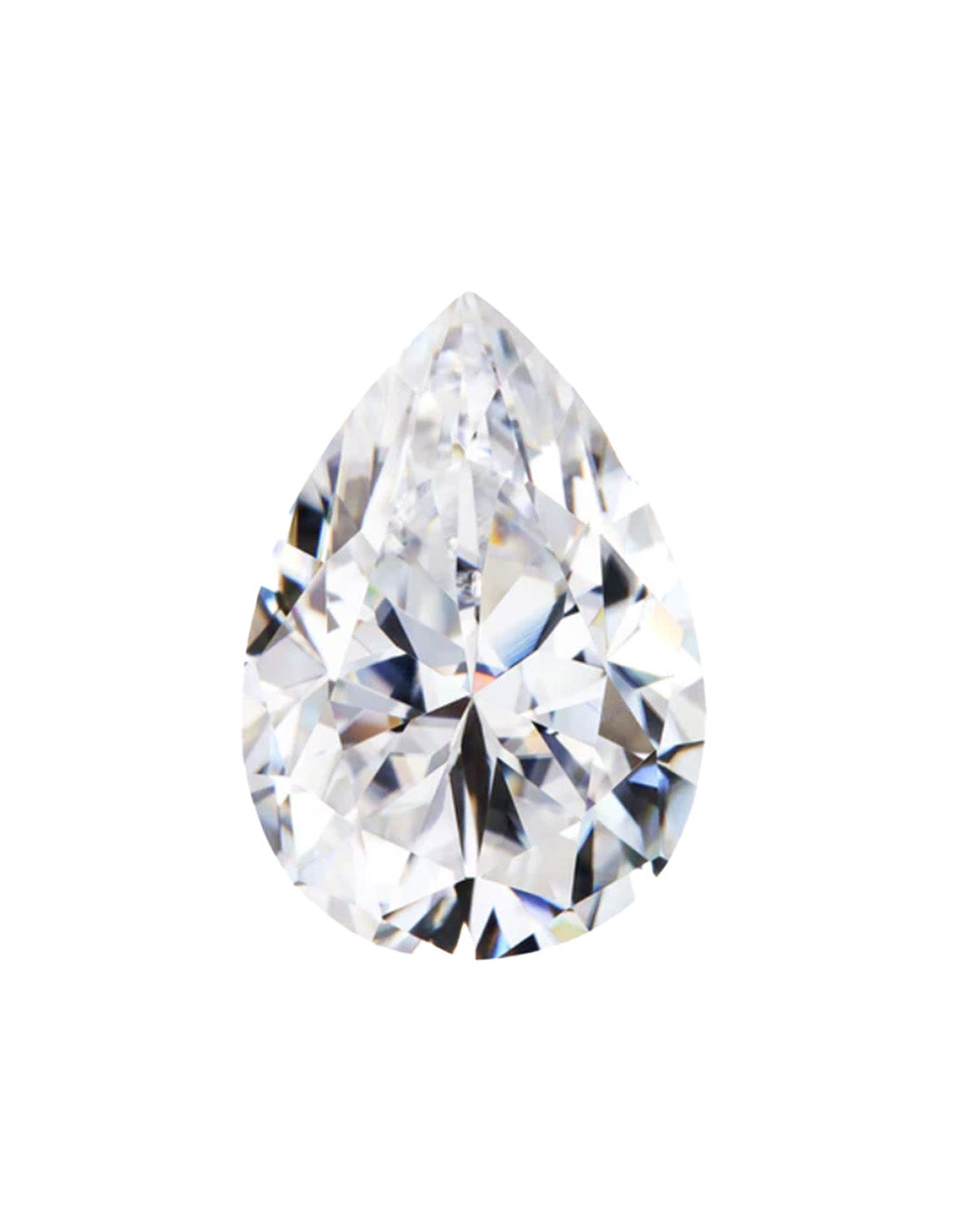
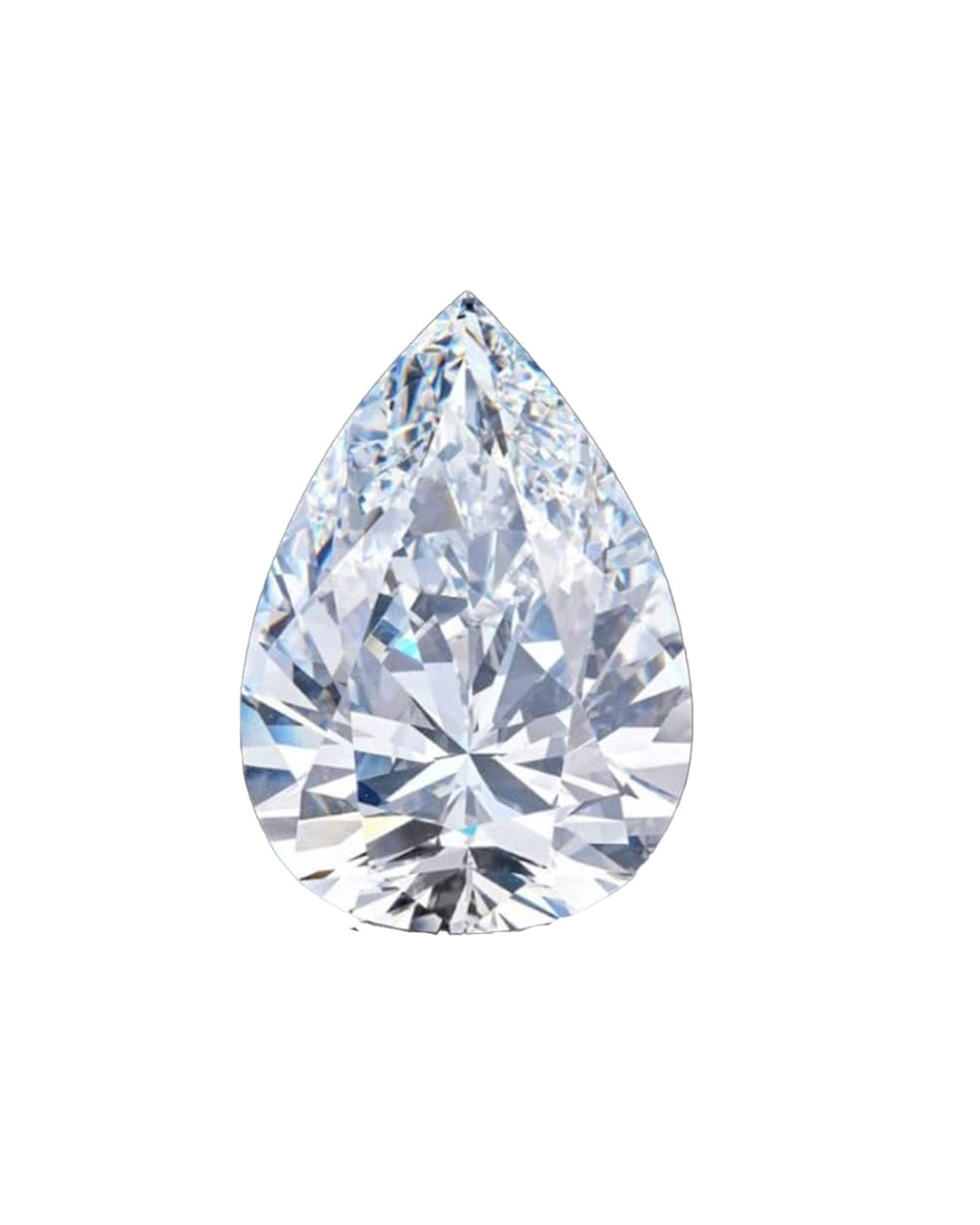
Understanding the Difference:
Moissanite
Durability: Moissanite scores 9.25 on the Mohs Scale of Hardness, making it one of the hardest materials on Earth—ideal for everyday wear like engagement rings.
Brilliance: Moissanite reflects light beautifully, often displaying more brilliance than diamonds. Its high refractive index (2.65 – 2.69) creates a noticeable "rainbow effect," especially in larger stones.
Cost: Moissanite typically costs far less than diamonds, with prices varying based on size, cut, and carat.
Diamond
Durability: Diamonds are the hardest substance on Earth, scoring a perfect 10 on the Mohs Scale, making them incredibly durable.
Brilliance: Diamonds reflect light in three ways: brilliance (white light), dispersion (coloured light), and scintillation (surface sparkle).
Cost: Diamonds are generally priced significantly higher, often reflecting their rarity and status.



